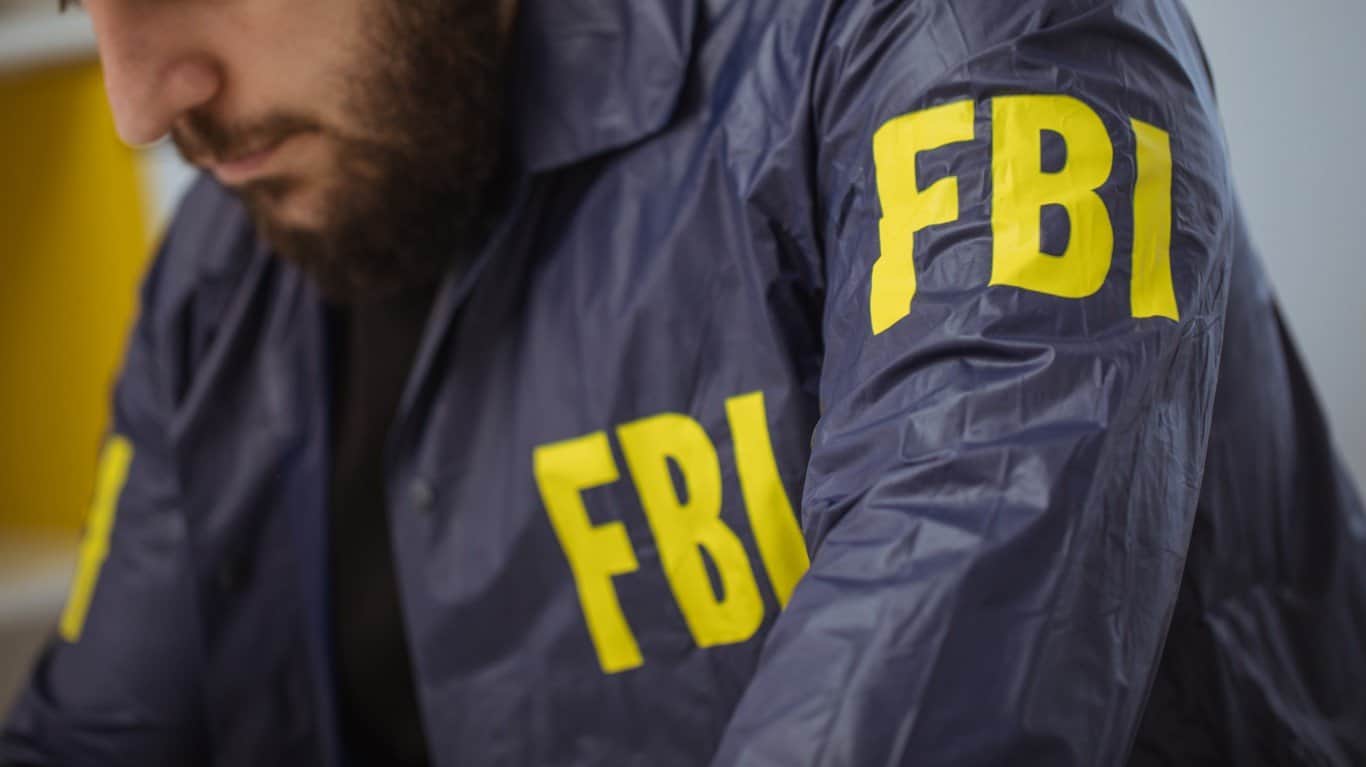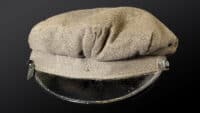In the early part of the 20th century, the United States was an exciting, affluent, and increasingly industrialized place to live. But dark clouds were gathering. The growing cities were often overcrowded, violent, and hotbeds of ethnic tension. With no systematic way of enforcing the law, the few thinly staffed federal agencies had no hope of maintaining control. Enter the FBI – officially formed on July 26, 1908. Since then, the agency has investigated (and in many cases solved) many of the world’s most sensational crimes. Terrorists, spies, killers, and thieves have all been brought to justice.
Amongst the thousands of FBI investigations, there are some notorious unresolved crimes. The 1940s murder of the Black Dahlia, a young 1940s actress in Los Angeles is still unresolved and joins the list of famous unresolved crimes in America.
Others are shocking because of their brutality or the sheer audacity of the perpetrators. Not all were murders, a significant number involved kidnap including child abduction. These are the most notorious kidnappings in American history.
To compile a list of 40 of some of the biggest cases the FBI has ever worked on, 24/7 Tempo drew information from the FBI website. These intriguing crimes captivated the public, fueled extensive media coverage, and required tremendous effort to crack – or in some instances, remain mysteries to this day. Our choices fall into a number of categories, including murder, kidnapping, and fraud.
Destruction of Black Tom Island Munitions

When two million tons of war materials ignite, it’s obvious that the someone is making a statement! This is what took place during World War I on July 30, 1916, at the Black Tom railroad yard on what is now a part of Liberty State Park. The blast was powerful enough to shatter windows in lower Manhattan and Jersey City and killed four people including a baby. Despite it being in the early hours of the morning, hundreds were injured. Even the Statue of Liberty itself was damaged by flying shrapnel.
The brains behind the attack were German agents who were sending a clear message to the US to stop supplying Britain and Russia with munitions. It didn’t work and the US goined the war within a year. The Bureau of Investigation, forerunner to the FBI, initially declared the explosion was an accident but the culprits were eventually identified. The case is notable as it led to the passing of the Espionage Act and the Sabotage Act, giving the bureau jurisdiction over the investigation of such crimes. What’s more, it left the German government owing $50 million in damages to the US. The debt was not fully settled until 1979.
Murder of a Federal Agent
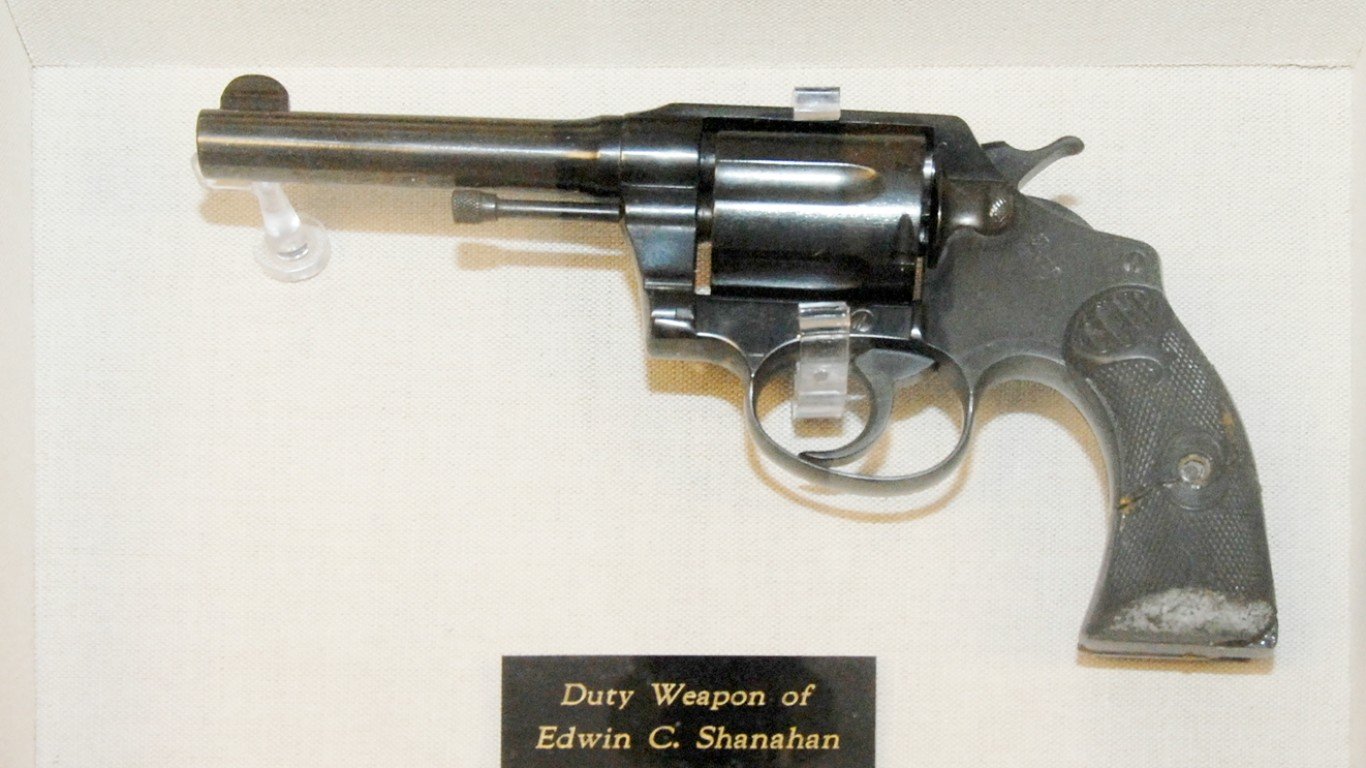
Bureau of Investigation Special Agent Edwin C. Shanahan has the dubious honour of being the first ever FBI agent to be killed in the line of duty October 11, 1925. The murder was committed by a car thief using a gun that he had hidden on the front seat of his vehicle. The agent was attempting to apprehend Martin James Durkin, a professional automobile thief, for violations of the National Motor Vehicle Theft Act. Durkin had a reputation as a highly successful thief, specializing in Pierce Arrows, Cadillacs, and Packards.He had already shot and wounded four police officers and despite the fact that Agent Shanahan returned fire, he was fatally wounded in the chest.
A further police officer was killed and another wounded by the desperate gunman before he was finally apprehended on the morning of January 20, 1926 on a train near St. Louis. He was incarcerated at Statesville Penitentiary in Joliet, Illinois in 1926 and was not released until 1954.
George “Machine Gun” Kelly Kidnaps an Oil Magnate
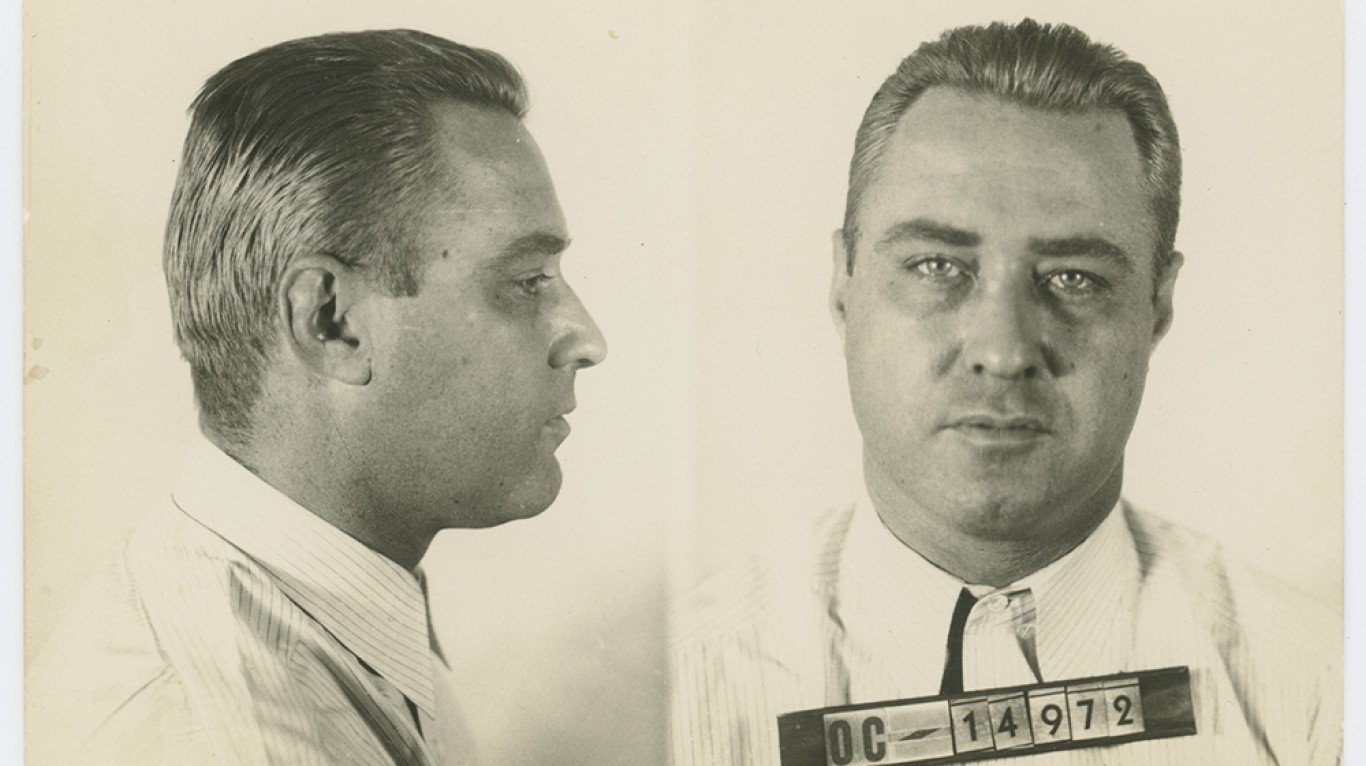
George “Machine Gun” Kelly and another gunman kidnapped wealthy oil tycoon Charles F. Urschel and a friend, Walter R. Jarrett, at Urschel’s home in Oklahoma City in 1933. The kidnappers released Jarrett, but held Urschel for a ransom of $200,000. Urschel was released nine days after the ransom was paid. Following an extensive investigation, agents zeroed in on Kelly and his wife, Kathryn Thorne Kelly, as partners in the crime. When agents confronted Kelly, he allegedly uttered the famous line: “”Don’t shoot, G-Men! Don’t shoot, G-Men!” as he surrendered. On Oct. 12, 1933, George and Kathryn Kelly were convicted and sentenced to life imprisonment.
John Dillinger Gang
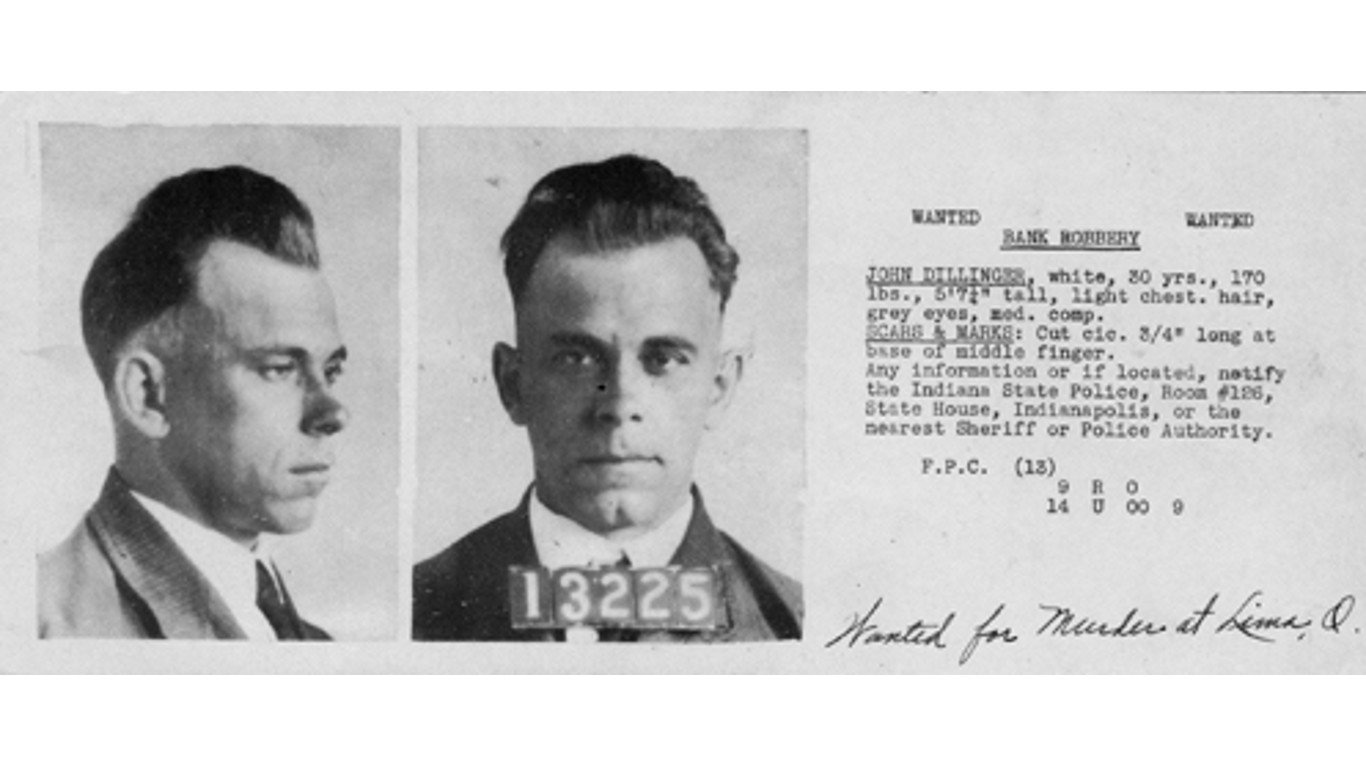
Depression-era citizens were looking for an anti-hero, and they found it in John Dillinger. From September 1933 until July 1934, he and his henchmen robbed banks and staged jailbreaks, killing 10 men and wounding seven others along the way. By stealing a sheriff’s car and driving it over the Indiana-Illinois state line, Dillinger violated the National Motor Vehicle Theft Act, a federal offense that brought in the FBI. Agency director J. Edgar Hoover assigned Special Agent Samuel A. Cowley to head the bureau’s investigation of Dillinger. Cowley set up headquarters in Chicago, where he and Melvin Purvis, the special agent in charge of the Chicago office, worked with East Chicago policemen in tracking down all tips about the criminal. A tip from a madam of a brothel in Gary, Indiana, led agents to a theater in Chicago where agents opened fire and ended Dillinger’s life of crime. Yet Dillinger’s legend has lived on in several movies, including the 2009 film, “Public Enemies,” in which Johnny Depp played the criminal.
Kansas City Massacre
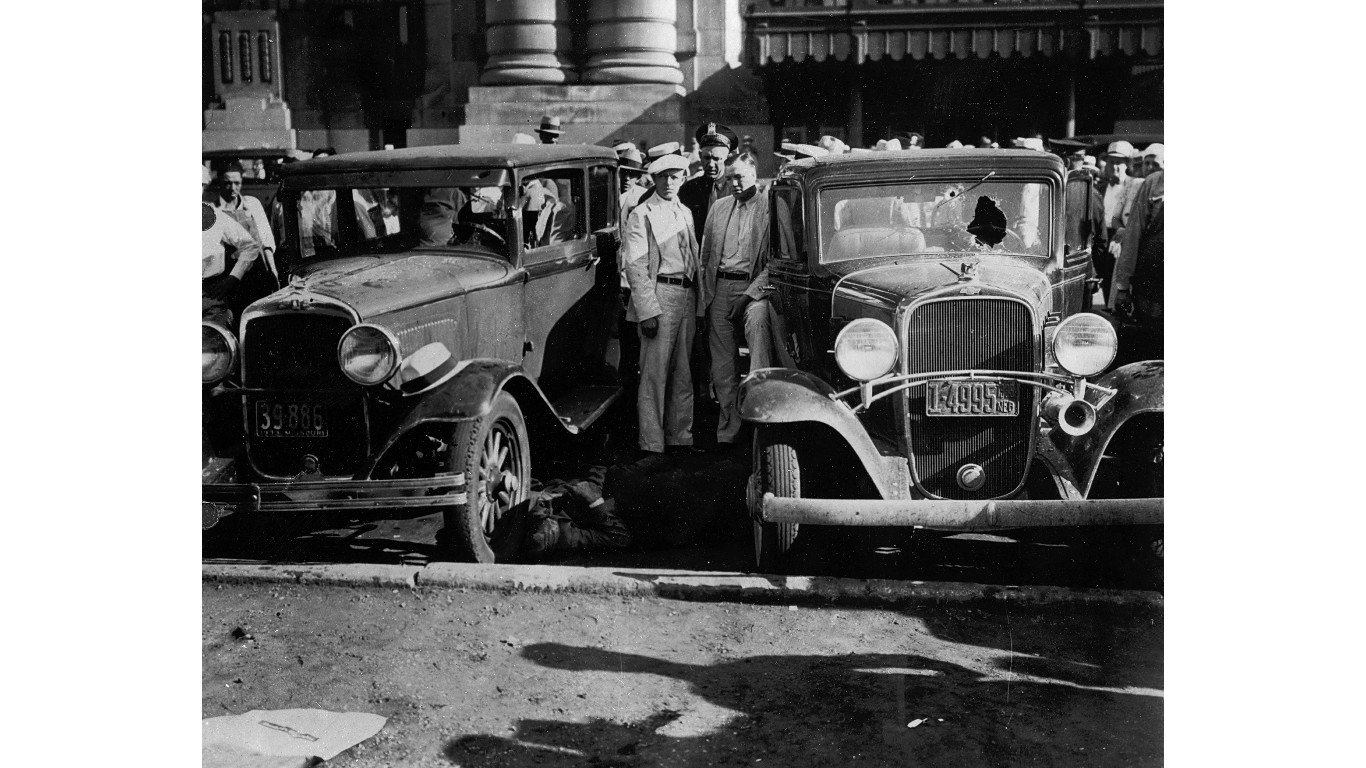
The Union Station railroad depot in Kansas City, Missouri was the scene of one of the most infamous shoot-outs in early FBI history. The incident brought the true extent of violent crime in the country into sharp focus for the American public for the first time. It took place on the morning of June 17, 1933 and by the time it was over, four law officers and one member of a criminal gang were dead.
Officers were returning escaped federal prisoner, Frank Nash, to the U.S. Penitentiary at Leavenworth, Kansas. A gang armed with machine guns and led by disgraced former sheriff and bootlegger, Vernon Miller (Verne) ambushed the guards and made their get away in a Chevrolet. FBI Agent Raymond J. Caffrey, Oklahoma Police Chief Otto Reed and two police officers were killed. The ambush was all for nothing as Nash was also killed at the scene. Miller was never caught but was killed a few months later by an underworld mob henchman.
Kidnapping and Murder of Charles Ross
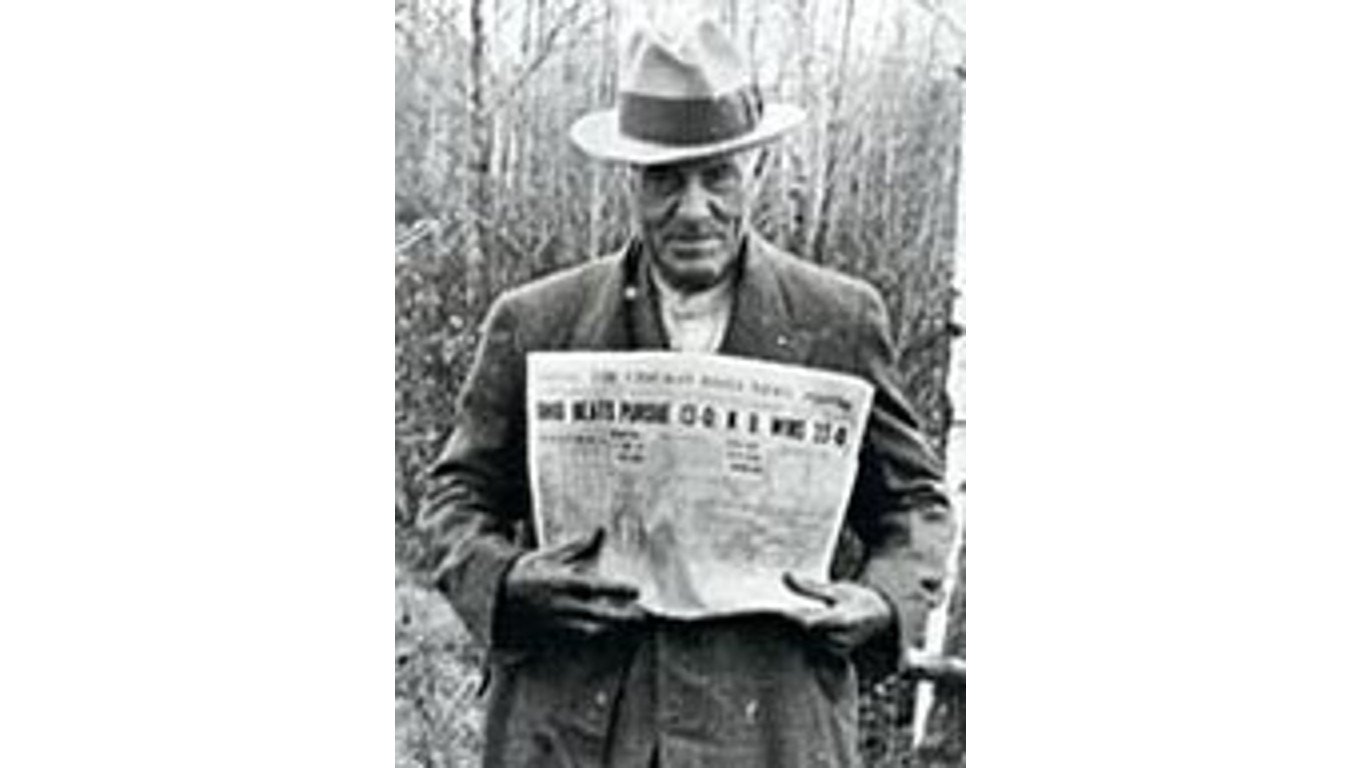
Late one evening in September 1937, Charles S. Ross, the wealthy president of a greeting card company, was driving toward Chicago when he was kidnapped by a gang led by John Henry Seadlund, a career criminal. When a fight broke out among the kidnappers, Ross was killed along with one of the criminals. In one of the most far-reaching FBI investigations at that time, Seadlund was later caught when agents traced the serial numbers of the $50,000 ransom money to him in Los Angeles. He later confessed to the kidnapping and murders, and was electrocuted in Chicago on July 14, 1938.
Nazi Spy Ring
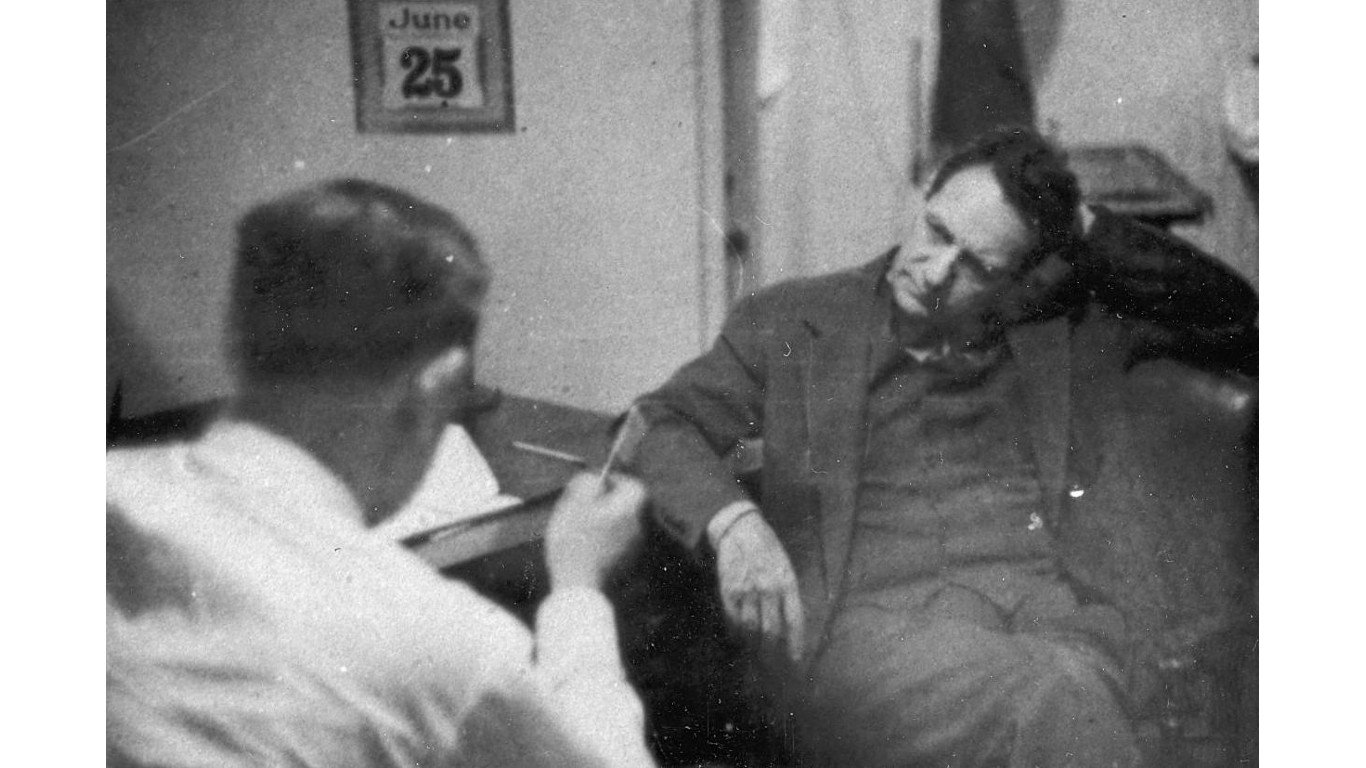
What became known as the Duquesne Spy Ring was a Nazi espionage network numbering some 33 members and operating in the US at the beginning of World War II. The ring was led by insurance fraudster Frederick Joubert Duquesne. The South African had become a naturalized U.S. citizen on December 4, 1913 but was also in contact with the German espionage system.
Thanks to the considerable efforts of William Sebold, a German-American who became a double agent for the FBI, the ring was exposed. The FBI used hidden microphones and a two-way mirrors to collect evidence for the trial which was held in December 1941. The gang’s activities were not limited to passing information, they were also planning to start fires at industrial plants and plant bombs. On January 2, 1942, all 33 members the ring were sentenced to serve a total of over 300 years in prison.
Murder of the Black Dahlia

Elizabeth Short
The 1947 murder of Hollywood hopeful, Elizabeth Short, has never been solved. Her body was naked body discovered mutilated and sliced in half, posed like a mannequin just feet from a sidewalk. There was no blood at the scene suggesting that she had been killed elsewhere. The case fired up the interest of the press who dubbed her the “Black Dahlia” after her alleged love of sheer black clothes are referencing the Blue Dahlia movie that was popular at the time.
The FBI was called in to assist with the case and rapidly identified the body using fingerprints taken at a previous arrest for underage drinking. Several leads were investigated but the killer was never identified.
Atom Bomb Spy Ring
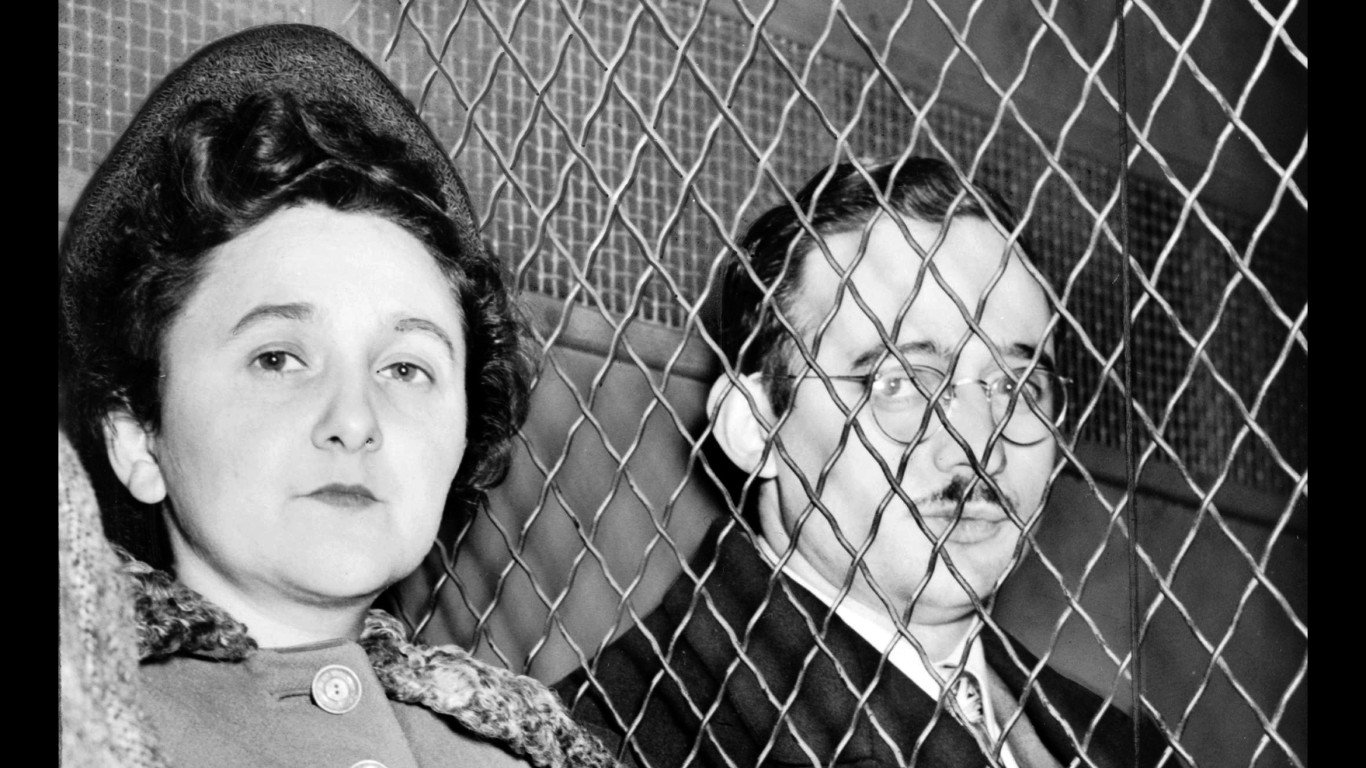
After World War II, Russia raced to build an atom bomb to keep up with the U.S. In 1949, the FBI learned that the blueprint for the American version of the bomb had been stolen several years earlier and turned over to a foreign power. The subsequent investigation led agents to Julius and Ethel Rosenberg, who were identified as the ringleaders in the plot to steal the information. Both were charged under the Espionage Act and found guilty. Although a campaign by sympathizers urged clemency, the two were executed in 1953.
Robbery Of Brinks, Inc.
Described as both the ‘perfect crime’ and ‘the crime of the century’ this heist nearly had the FBI stumped, but not quite. It took place on the evening of January 17, 1950, just as the offices of the Boston, Massachusetts security firm, Brinks, Inc., were closing. Five men wearing gloves and masks entered the building, bound the employees, and grabbed $1.2 million in cash and another $1.5 million in checks and other securities. It was the highest sum of money ever stolen in the US to that date. FBI agents joined the local police and soon applied some heat to the local underworld.
The case made front-page news and a $100,000 reward helped to generate thousands of leads but it would be six years before the crime was solved. Eventually, eight people were convicted but two died before they faced justice. Only a fraction of the stolen fortune was ever recovered.
Downing of United Air Lines Flight 629

In 1955, the FBI investigated its first major criminal attack on a US airline. United Airlines flight 629 took off from Denver on November 1st but around 35 miles into its journey it crash-landed in a sugar beet farm. All of the 44 passengers and crew were killed including the mother of 23-year-old Jack Graham. The painstaking investigation of the scattered wreckage soon revealed clues as to the culprit.
Whilst FBI forensic experts identified the bodies using fingerprint records, the Civil Aeronautics Board assisted them with finding and analyzing pieces of the wreckage. They soon concluded that a violent explosion had caused the crash. Further work revealed that Jack Graham, the son of one passengers, had a dysfunctional relationship with his mother. Shortly before the fight, he had purchased explosives and packed them in her bag. Then, he took out four insurance policies on her life. Graham confessed to his crimes and was eventually executed.
Kidnapping and Murder of Emmett Till
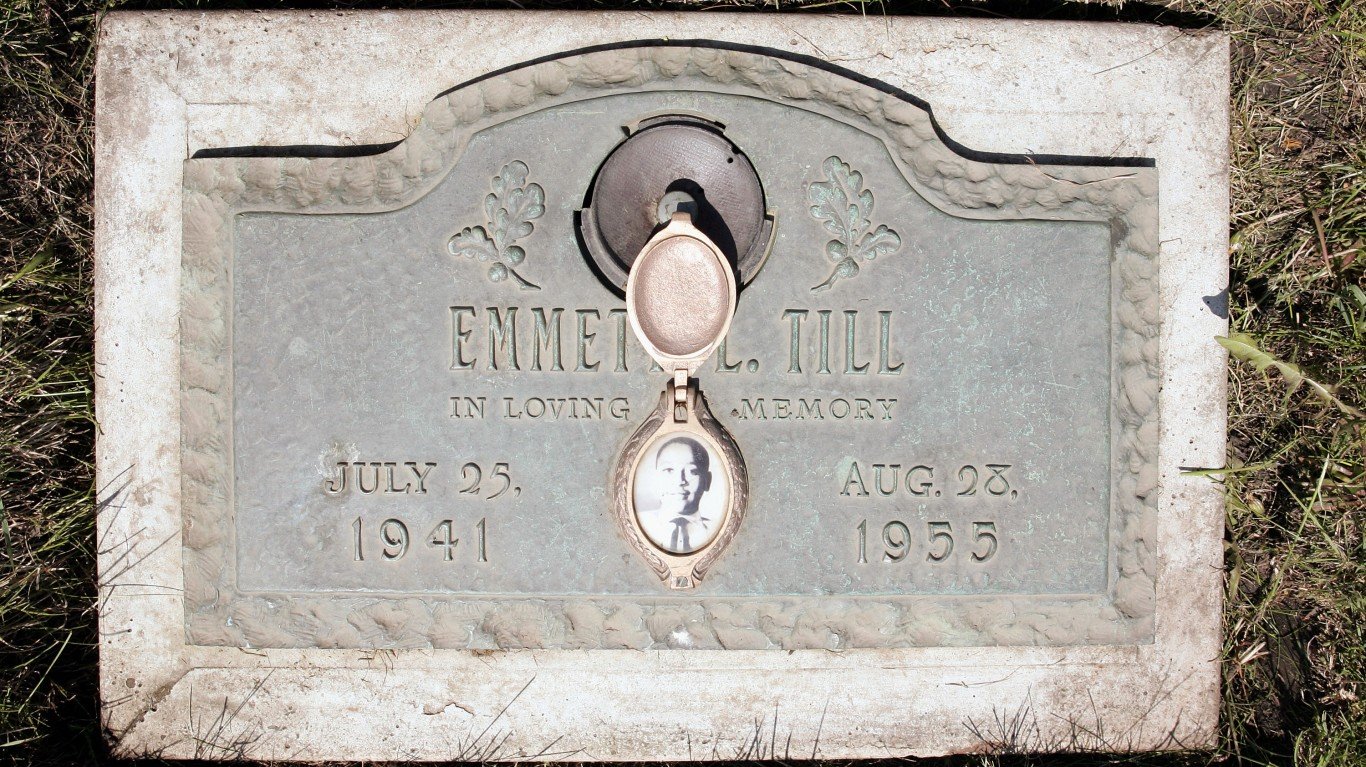
The recent movie “Till” recounted the racially motivated killing of Emmett Till, a 14-year-old from Chicago who was visiting family in Money, Mississippi. When the young man was accused of whistling at a white woman, two men kidnapped and killed him, shooting him in the head and throwing him into the Tallahatchie River. Roy Bryant and his half-brother J.W. Milam, were accused of the murder, but an all-male, all- white jury acquitted them. Long after the crime, Bryant and Milam confessed to a magazine journalist. Both are now deceased. The killing galvanized the Civil Rights movement in the 1950s.
Kidnapping of Peter Weinberger
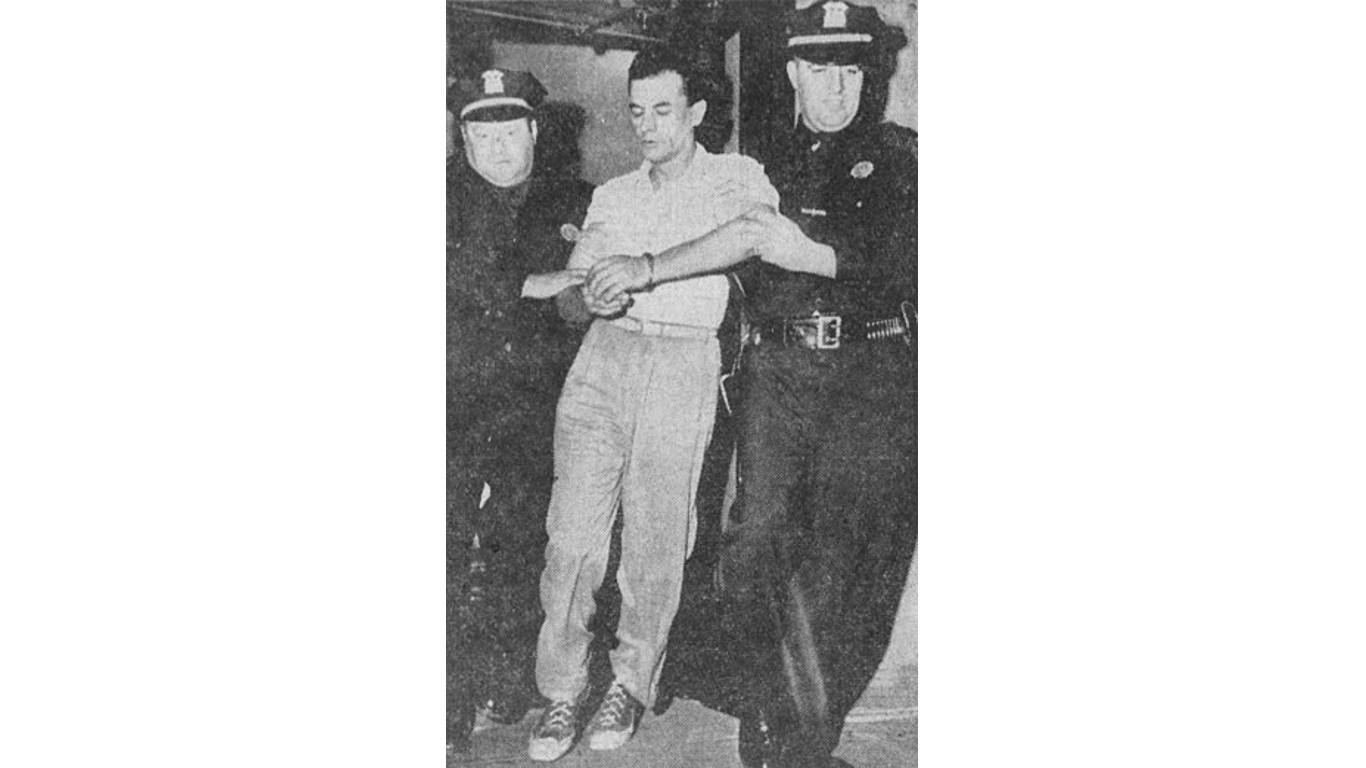
One-month-old Peter Weinberger was snatched from his pram outside his suburban home on July 4th, 1956. The case deeply disturbed average, middle-class families all over America. If it could happen to the Weinbergers, it could happen to anyone. People felt afraid and started locking their doors. The surprisingly polite kidnapper had left a note apologizing and asking for $2,000 to return the baby “safe and happy”. Laws at the time prevented the FBI from getting involved in the case until a seven-day waiting period had expired. During this time, there were two unsuccessful attempts to get a phony ransom package to the kidnapper, more notes, and two phone calls.
Seizing on the handwritten notes as the best evidence, FBI handwriting experts trained up local agents to compare the notes with two million specimens provided by numerous authorities including the New York State Motor Vehicle Bureau and many schools. On August 22nd, a match was found. Angelo LaMarca, a taxi dispatcher and truck driver, was living beyond his means and needed cash fast to pay off a loan shark. When he noticed little Peter in his pram and acted impulsively. Due to the delay in apprehending him, he had abandoned the baby in heavy brush where his remains were later found. Thanks to this case, the FBI’s waiting period in kidnapping cases was reduced from seven days to 24 hours.
Theft of a 33-Carat Diamond

Vera Krupp, a German actress and wealthy divorcee of a German industrialist, owned the massive diamond. The center blue-white stone weighed more than 33 carats and was valued at $275,000 in 1959 (almost $3 million today). When the diamond was stolen from the owner’s ranch outside Las Vegas in 1959, a cross-country hunt led the FBI to John William Hagenson, a fugitive wanted in connection to a similar robbery in California. Hagenson and several accomplices were found guilty, but Hagenson, the ringleader, was freed on appeal. Vera Krupp got her diamond back. After she died, Richard Burton bought it for his then-wife, Elizabeth Taylor. It was sold again after Taylor’s death.
Alcatraz Escapes

Alcatraz has held captives since the Civil War but during the 1930s it was re-fortified to hold the perpetrators of serious and organized crime. There are famous names amongst its inmates including George ‘Machine Gun’ Kelly and Al Capone. Surrounded by the rough waters of the Pacific Ocean, iron bars, and guard towers, the prison was practically escape-proof. But three men may have managed it.
On the morning of June 12th, 1962, three inmates went missing. They were brothers John and Clarence Anglin and Frank Morris. Guards found cleverly designed dummy’s heads in their beds which had fooled the night shift. Investigations concluded that the trio had successfully reached the northeast shore of the island but what happened next remains a mystery. In 1979 the FBI turned over the case to the U.S. Marshals Service who continue to investigate.
Kidnapping of Frank Sinatra Jr.
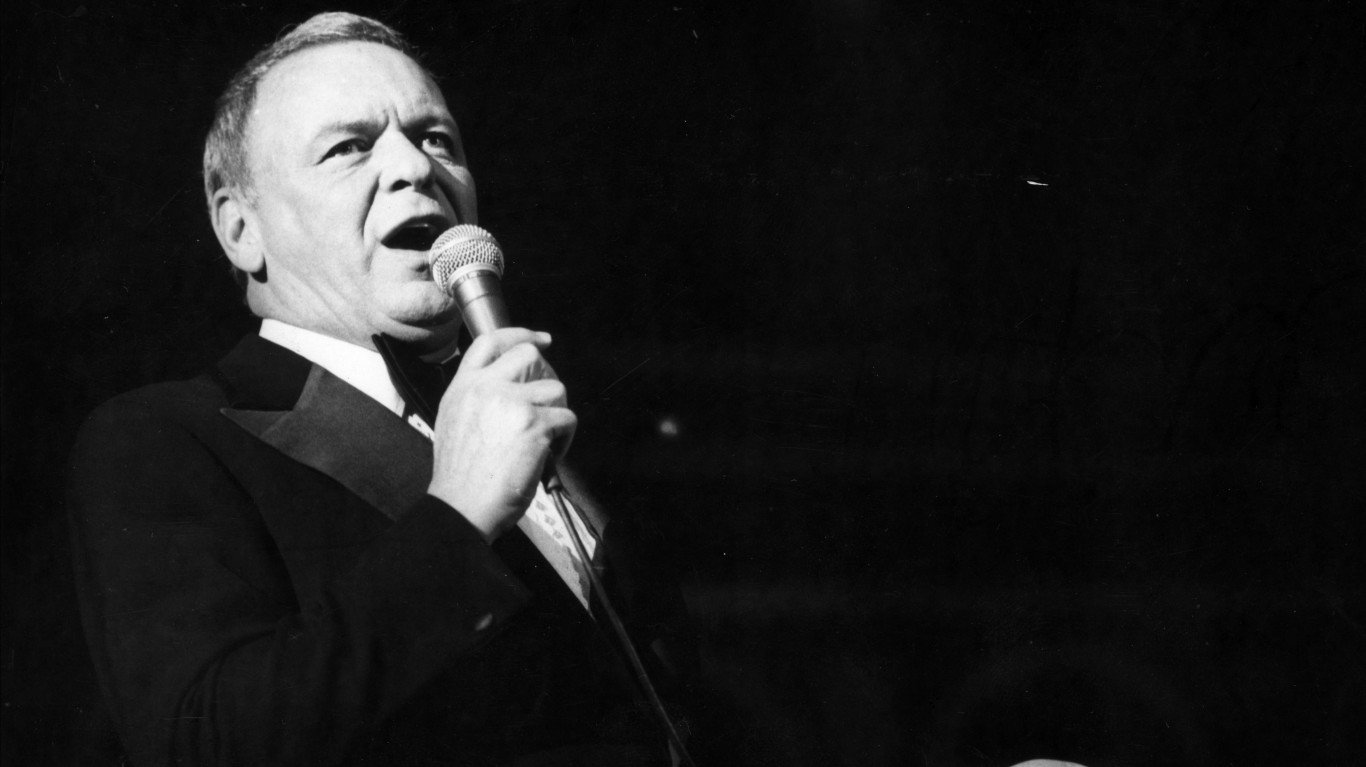
The kidnapping of Frank Sinatra Jr. is one of the most high-profile kidnapping cases that the FBI have ever handled. The 19-year-old was snatched on the evening of December 8th, 1963 from his dressing room by two 23-year-old former high school classmates, Barry Keenan and Joe Amsler.
The FBI was brought in immediately and everyone anxiously awaited the ransom demand which arrived a couple of days later. The sum of $240,000 was handed over and Sinatra Jr. was freed. As the FBI net closed around the perpetrators, one of their helpers lost his nerve and gave them away.
Assassination of JFK

The nation still asks, “Who Killed JFK?” The assassination of the 35th president during a Dallas motorcade in 1963 shocked the country. Lee Harvey Oswald was identified as the shooter after being spotted at the Texas School Book Depository. He also killed Dallas policeman J.D. Tippit. Oswald was later killed by Jack Ruby. Because Oswald was never brought to trial, we’ll never know if he really did it or what his motives were if he did. In 2013, special agent Robert Frazier discussed his part in the investigation as the bureau’s lead firearms and ballistics expert. At age 94, Frazier said he firmly believed Oswald was the assassin. “There has never been anything to indicate positively that anybody else was involved,” he said. Yet numerous conspiracy theories still abound about the killing.
Church Bombing in Alabama
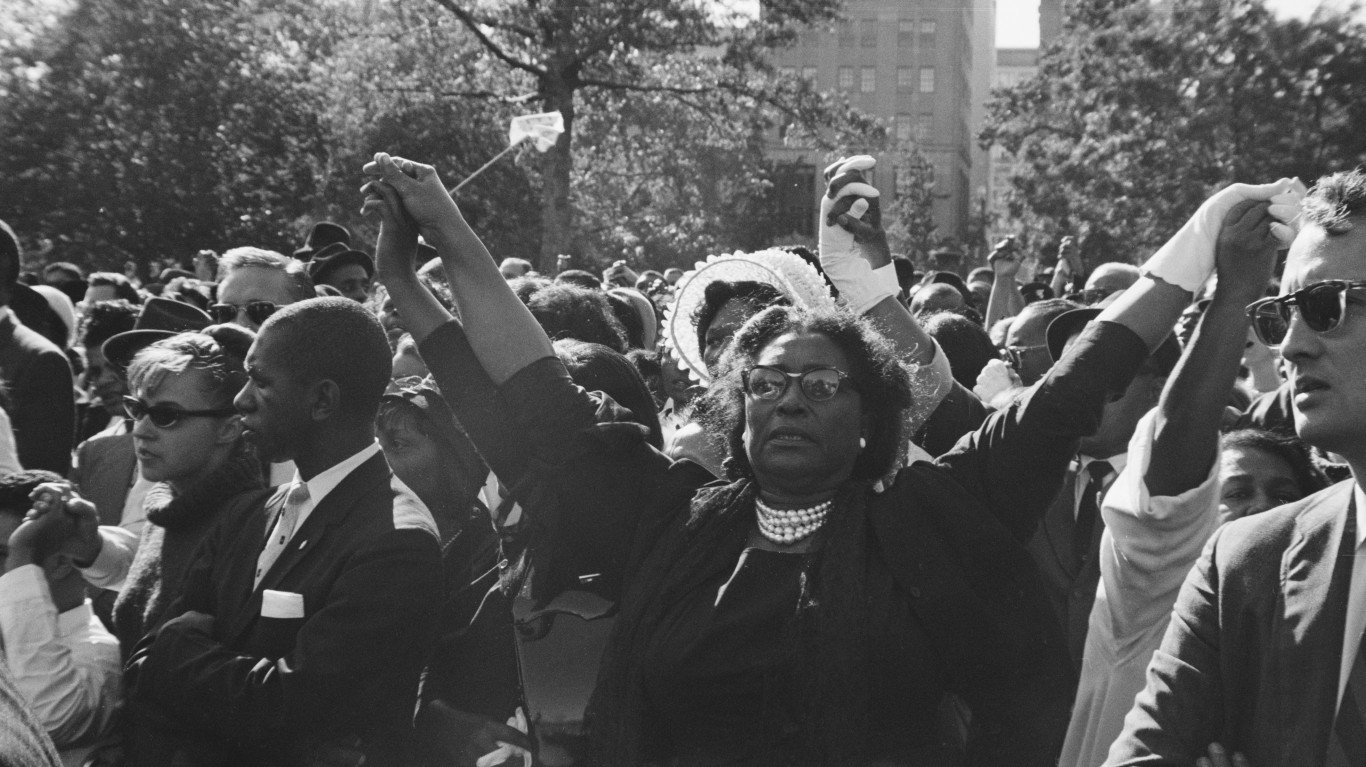
The 1963 bombing of a church in Birmingham that killed four young African-American girls served as a pivotal moment in the fight for civil rights. The bureau focused on four KKK members – Robert E. Chambliss, Bobby Frank Cherry, Herman Frank Cash, and Thomas E. Blanton, Jr. – as the culprits. For lack of evidence and the reluctance of witnesses to talk, charges weren’t filed, but in 1977, Alabama attorney general Robert Baxley got a conviction of Chambliss and he was sentenced to life in prison. Cash died in 1994, but Blanton and Cherry were tried and convicted in 2001 after new evidence was discovered. Both were sentenced to life in prison, and both died while incarcerated.
Mississippi Burning
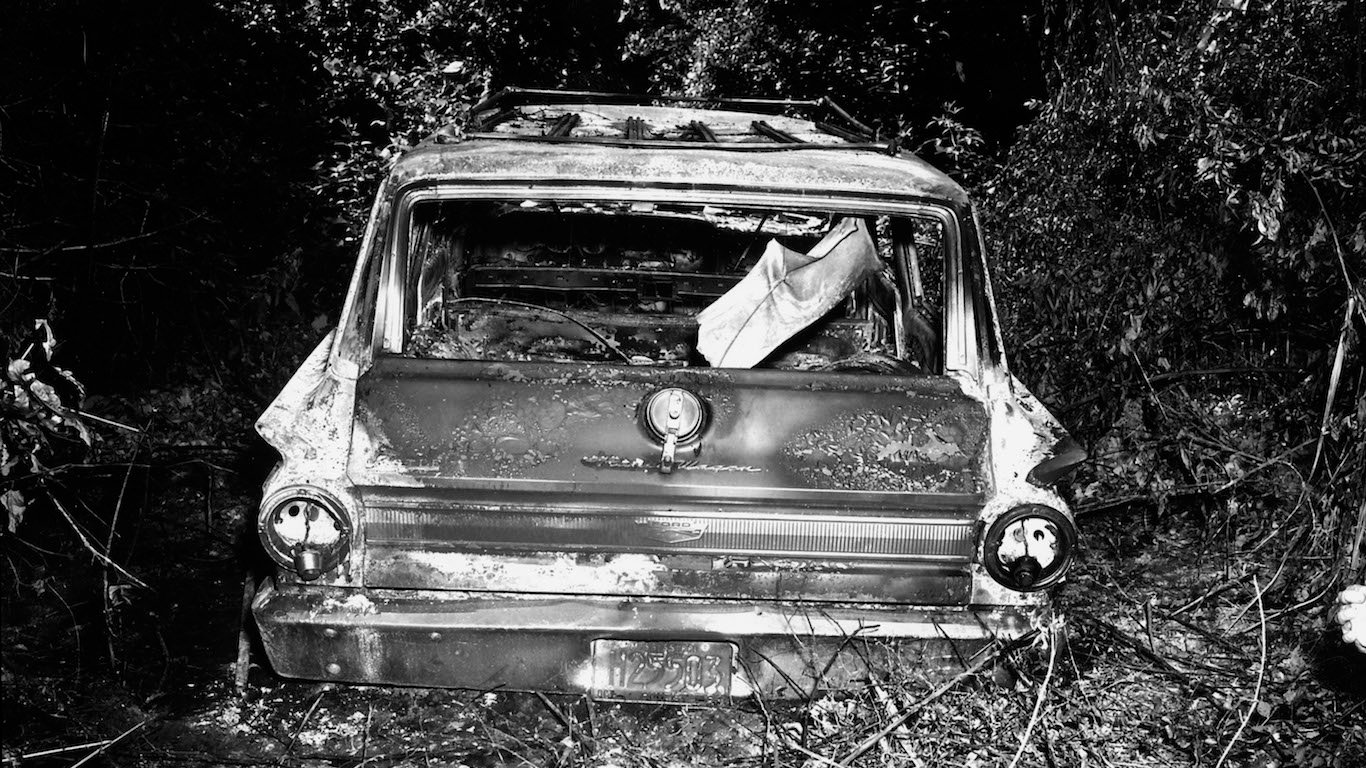
June 1964 was “Freedom Summer,” a time when civil rights advocates went on a campaign to register African-Americans in the South to vote. The move incensed the KKK, who burned a church where Freedom Rider volunteers Michael Schwerner and James Chaney had recently spoken, hoping to lure the men back to the area. Schwerner, Chaney, and a third man, Andrew Goodman, were arrested for speeding by a Neshoba County deputy sheriff named Cecil Price. They were released but Price followed them, and their burnt station wagon was later found with no sign of the three men. After an extensive search, their bodies were found on a local farm. In 1967, seven of the 18 men charged in the crime, including Price, were found guilty – not of murder but of conspiring to deprive the victims of their civil rights – and sentenced to three to ten years in prison. One of the men who was acquitted, Edgar Ray Killen, was later charged with manslaughter and convicted in 2005. The horrific nature of the crime pushed Congress to pass the Civil Rights Act of 1964.
D.B. Cooper Hijacking
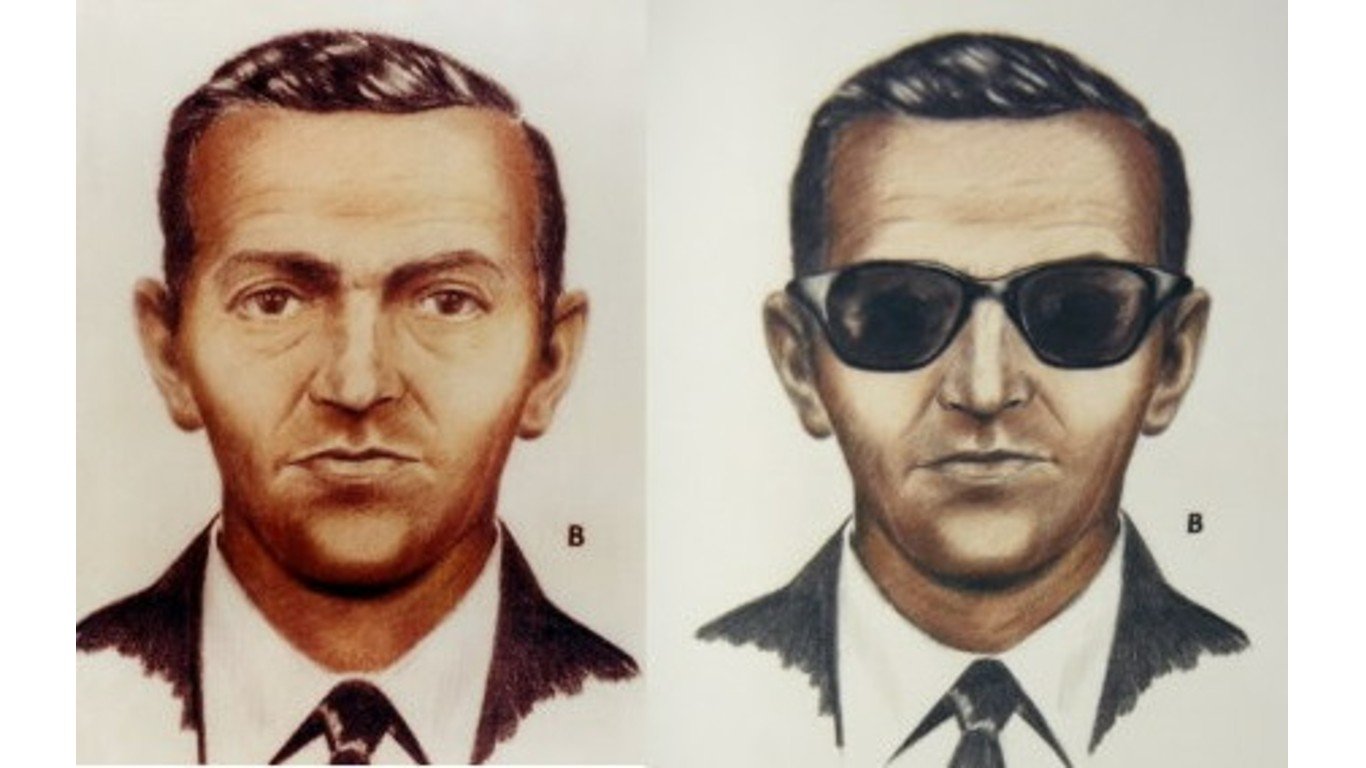
One of the great unsolved mysteries in FBI history, started on November 24, 1971. Northwest Orient Airlines flight 305 took off from Portland, Oregon. During the flight, a nondescript passenger, who called himself Dan Cooper, handed a stewardess a note. It indicated that he had a bomb in his briefcase, which he proceeded to show her. She was told to take a note to the captain requesting four parachutes and $200,000 in twenty-dollar bills. The flight landed in Seattle and the hijacker’s request was fulfilled in exchange for the release of all the passengers. The flight took off again and between Seattle and Reno, the hijacker leapt from the plane and was never seen again. The FBI interviewed hundreds of people and considered numerous items of evidence including a rotting bag of twenty-dollar bills found near the area in 1980. Many believe Cooper did not survive the jump but his body has never been recovered.
Hijack With a Grenade
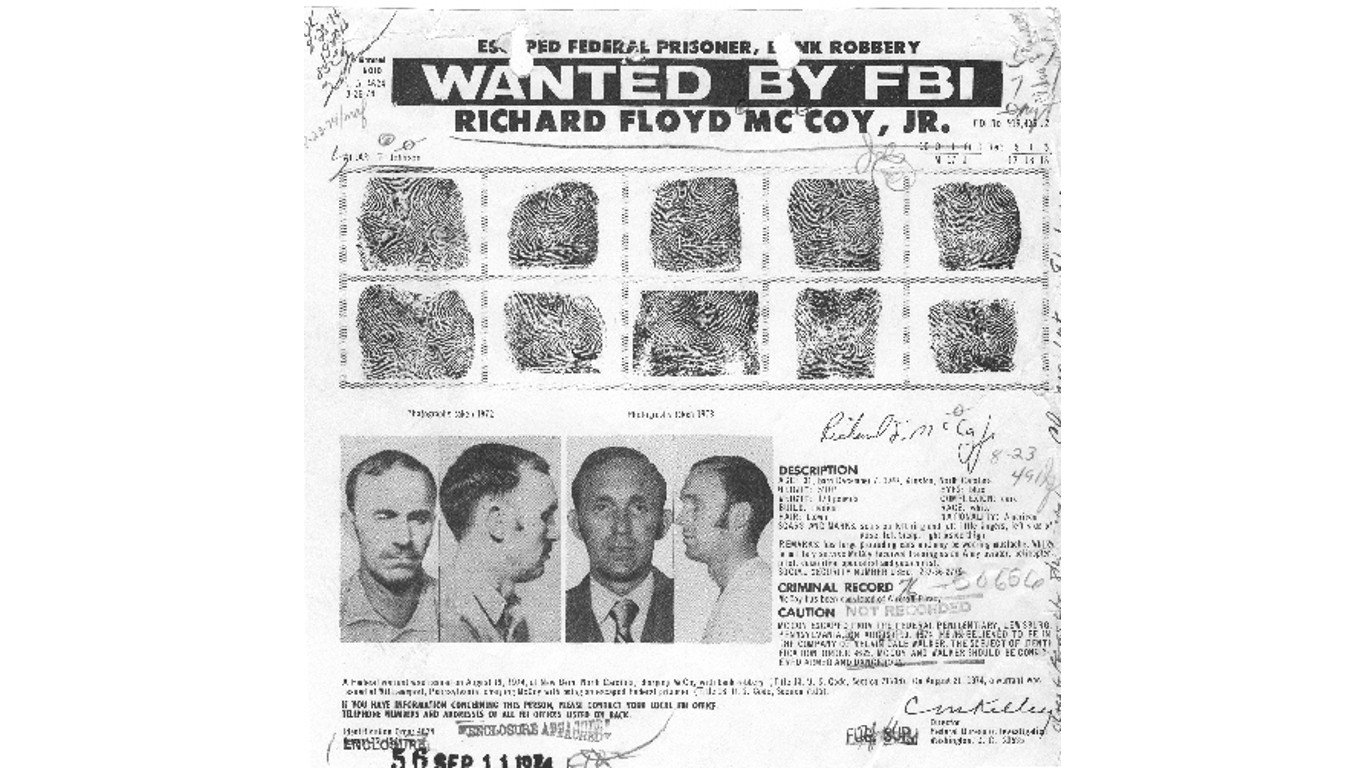
On April 7, 1972, a passenger on a United Airlines plane en route from Newark to Los Angeles showed a flight attendant a grenade and demanded ransom. After landing in San Francisco, the hijacker commandeered the aircraft, releasing all passengers and one flight attendant. Threatening the crew with an explosive if any plane followed the aircraft, he then jumped out over Utah. An acquaintance of the hijacker fingered 29-year-old Richard Floyd McCoy, a Vietnam veteran, helicopter pilot, and avid skydiver. He claimed innocence, but was found guilty of aircraft piracy and interfering with flight crew members and sentenced to 45 years in prison. His appeal was denied by the U.S. Supreme Court in 1973. A year later, he and several other prisoners made a daring jailbreak. When the FBI tracked him down, he opened fire and was shot and killed. Because of the similarity in the crimes, he is thought by some to have been earlier hijacker “D.B. Cooper.”
Kidnapping of Patty Hearst
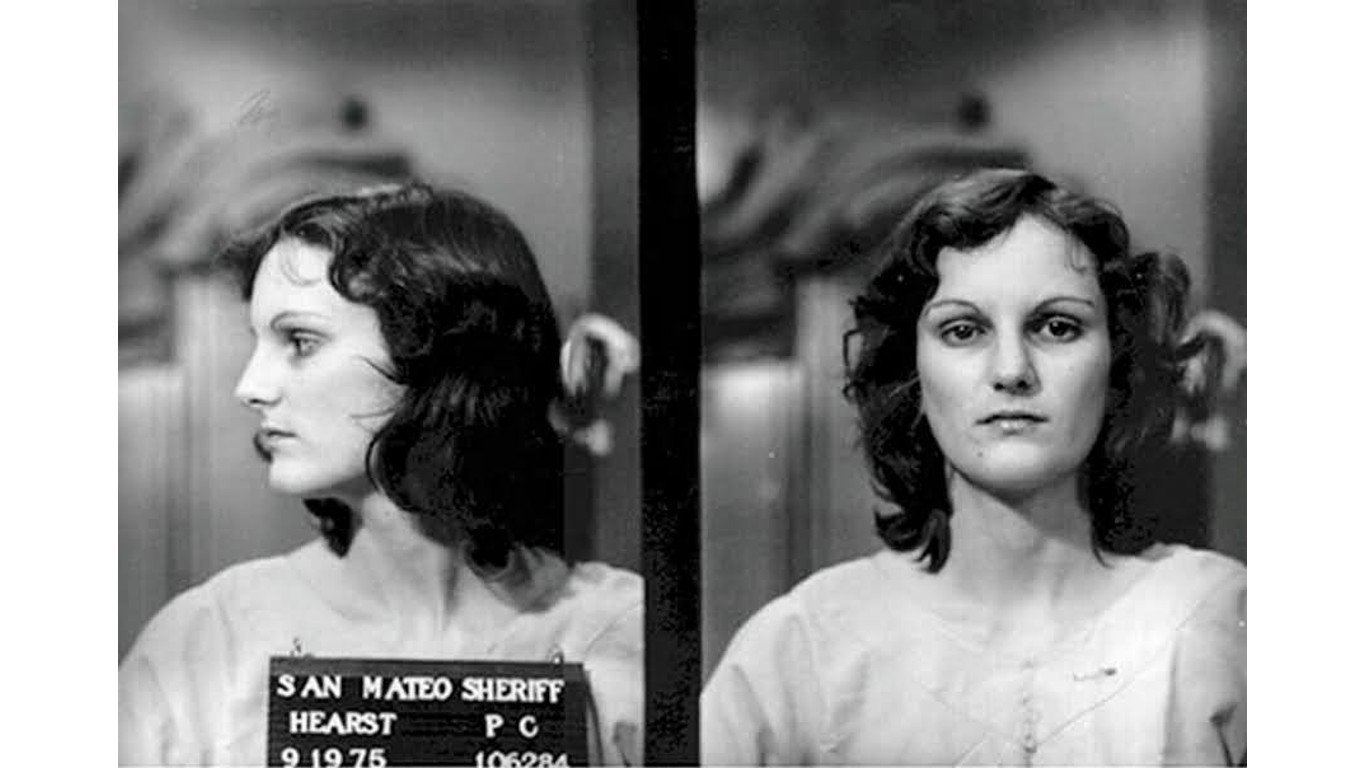
The student granddaughter of American publishing magnate William Randolph Hearst was kidnapped in 1974 but this FBI case would end up being far from straightforward. The 19-year-old was snatched from her Berkeley apartment by a group calling themselves the Symbionese Liberation Army (SLA) who demanded money and food in exchange for Patty Hearst’s release. Their wider aim was to launch a guerilla war against the US government.
Public interest in the case increased as audiotapes claiming that Patty had joined the SLA were released. She was later caught on camera taking part in a bank robbery. The FBI’s extensive investigation eventually led to the capture of Patty and other SLA members. She was found guilty of bank robbery but was eventually pardoned when she claimed that she had been brainwashed.
Donnie Brasco Undercover
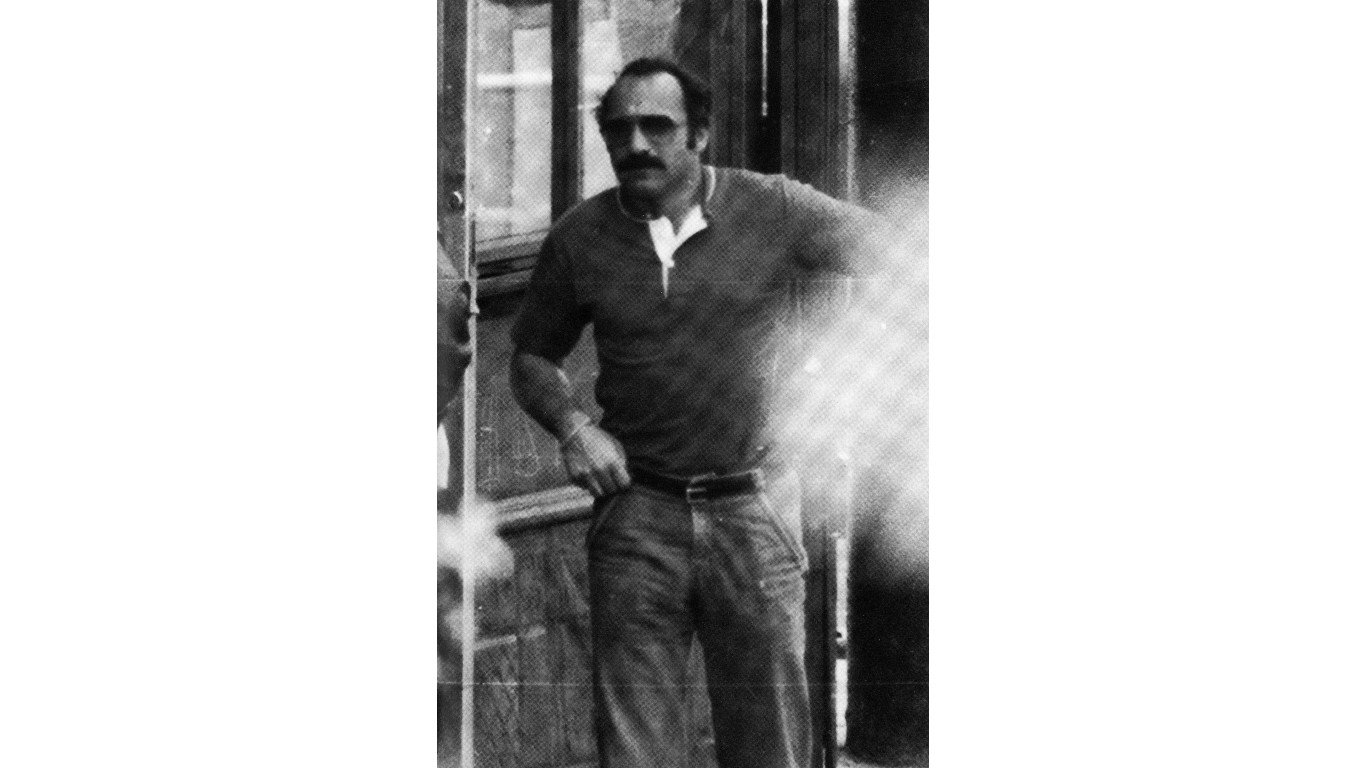
Breaking up an organized crime family often depends on having an agent infiltrate the gang. FBI agent Joe Pistone (aka Donnie Brasco) did this brilliantly for six years, fooling the hardened mafiosi of the Bonanno, Gambino, Colombo, Genovese, and Lucchese crime families in New York City. The information Pistone gathered eventually led to the downfall of those criminal enterprises in the mid-seventies. The life of Pistone was made into a 1997 movie, titled with his alias, and starring Al Pacino and Johnny Depp.
ABSCAM Sting
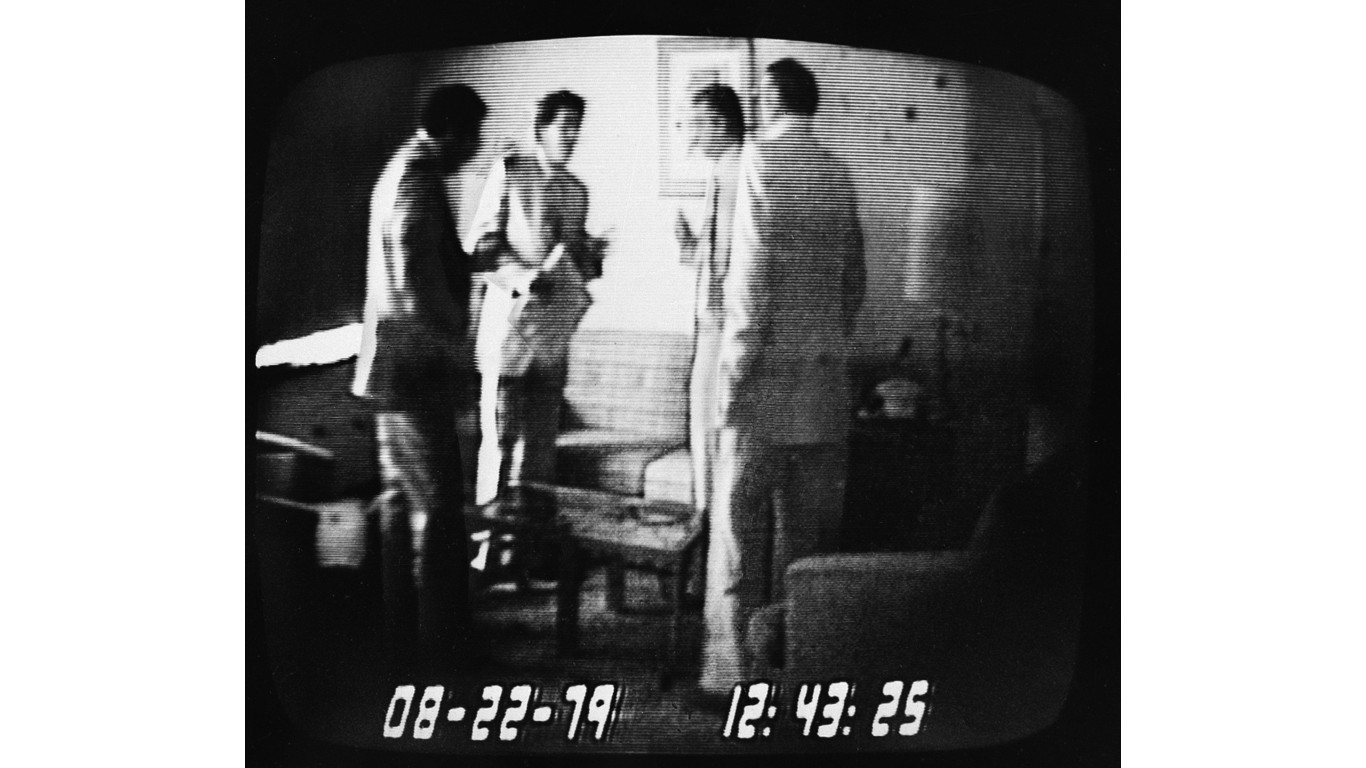
ABSCAM is the name given to a high-level investigation into organized crime and corruption but it started out as an investingation into stolen art. Abdul Enterprises was a bogus company set up by the FBI in 1978 to catch thieves selling stolen art treasures. The operation was a success leading to the recovery of paintings worth $1 million and halting $600 million worth of fraudulent security sales.
The investigation also identified politicians willing to provide gambling licenses in Atlantic City and audiences with US Congressmen for a price. This was one of the more controversial FBI cases with allegations of entrapment. Nevertheless, it resulted in one senator and six congressmen being found guilty of corruption.
The Unabomber
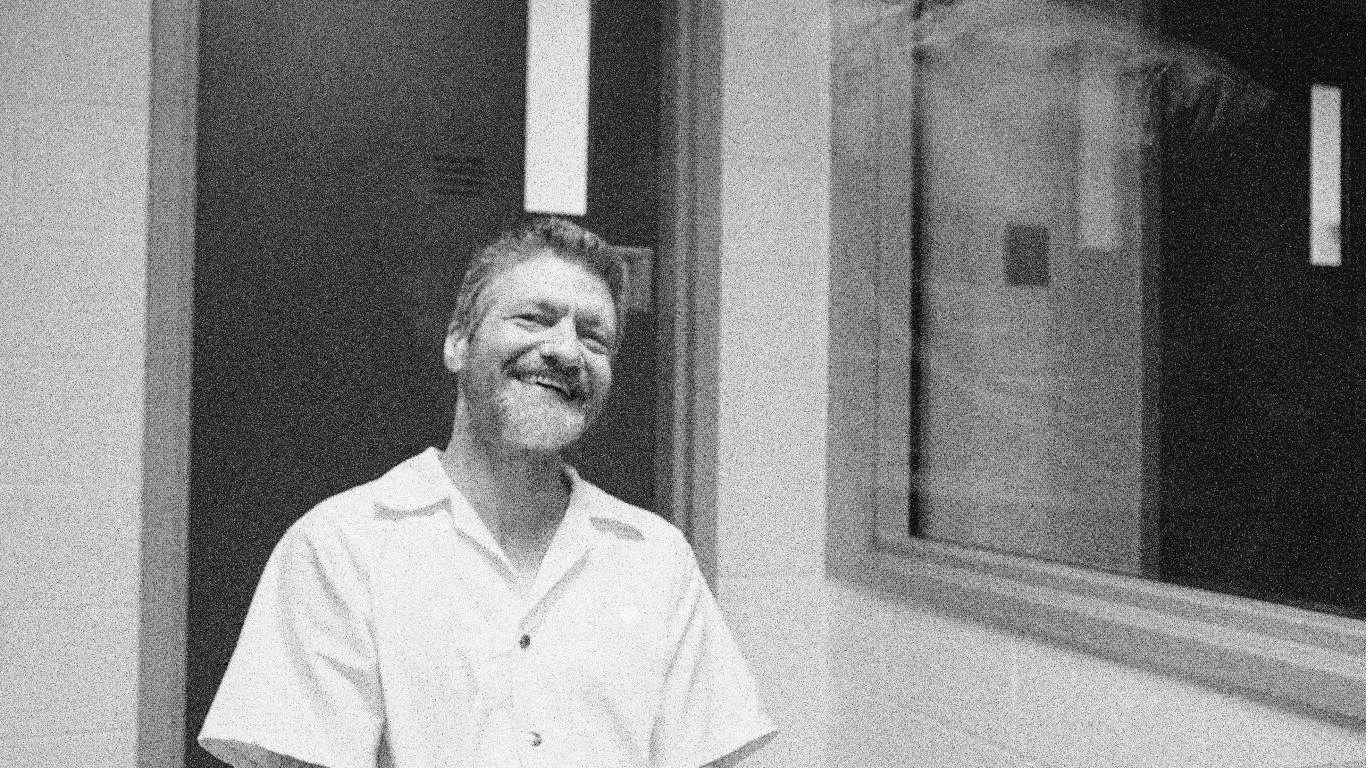
For nearly two decades, Theodore Kaczynski, known as the Unabomber, had the country on edge, sending bombs through the mail that killed three people and injured two dozen. The campaign started in 1978 with the explosion of his first, primitive homemade bomb at a Chicago university. When Kaczynski sent the Bureau a 35,000-word screed, the agency took an unusual step and published it in the Washington Post, hoping someone could identify the author. It worked. The Unabomber’s brother, David Kaczynski, recognized his troubled sibling’s writings. The FBI arrested Theodore Kaczynski at his cabin in Montana on April 3, 1996, ending his reign of terror.
Operation Greylord
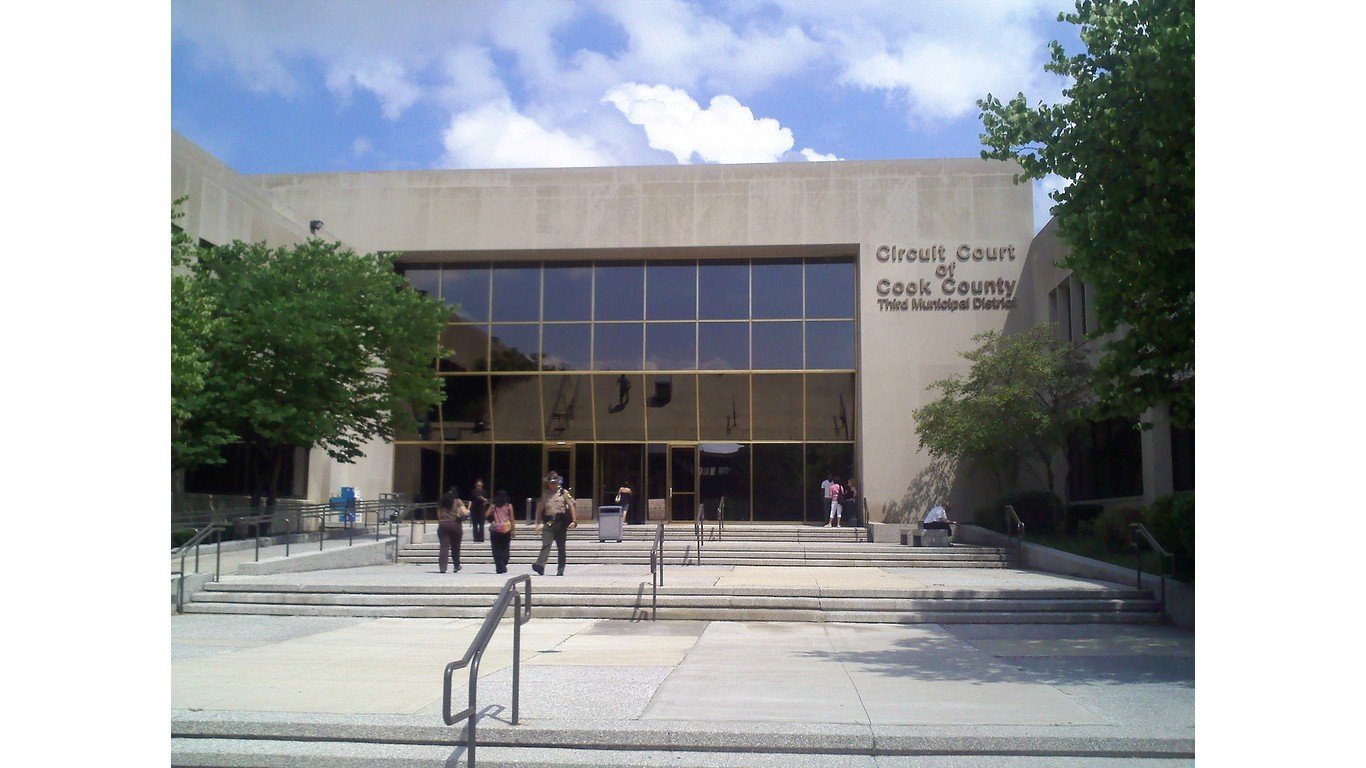
Operation Greylord was a 3-year-long joint operation between the FBI, the IRS Criminal Investigation Division, the Chicago Police Department Internal Affairs Division, the Illinois State Police, and the US Postal Service. It cleaned up the administration of justice in Cook County and exposed corrupt practices.
The first man found guilty in this huge sting operation was Cook County deputy traffic court clerk, Harold Conn. He accepted bribes to be passed on to judges for fixing tickets. By the end of the operation in 1984, 17 judges, 48 lawyers, eight policemen, 10 deputy sheriffs, eight court officials, and one state legislator had been indicted. Most were found guilty.
Most Damaging Spy
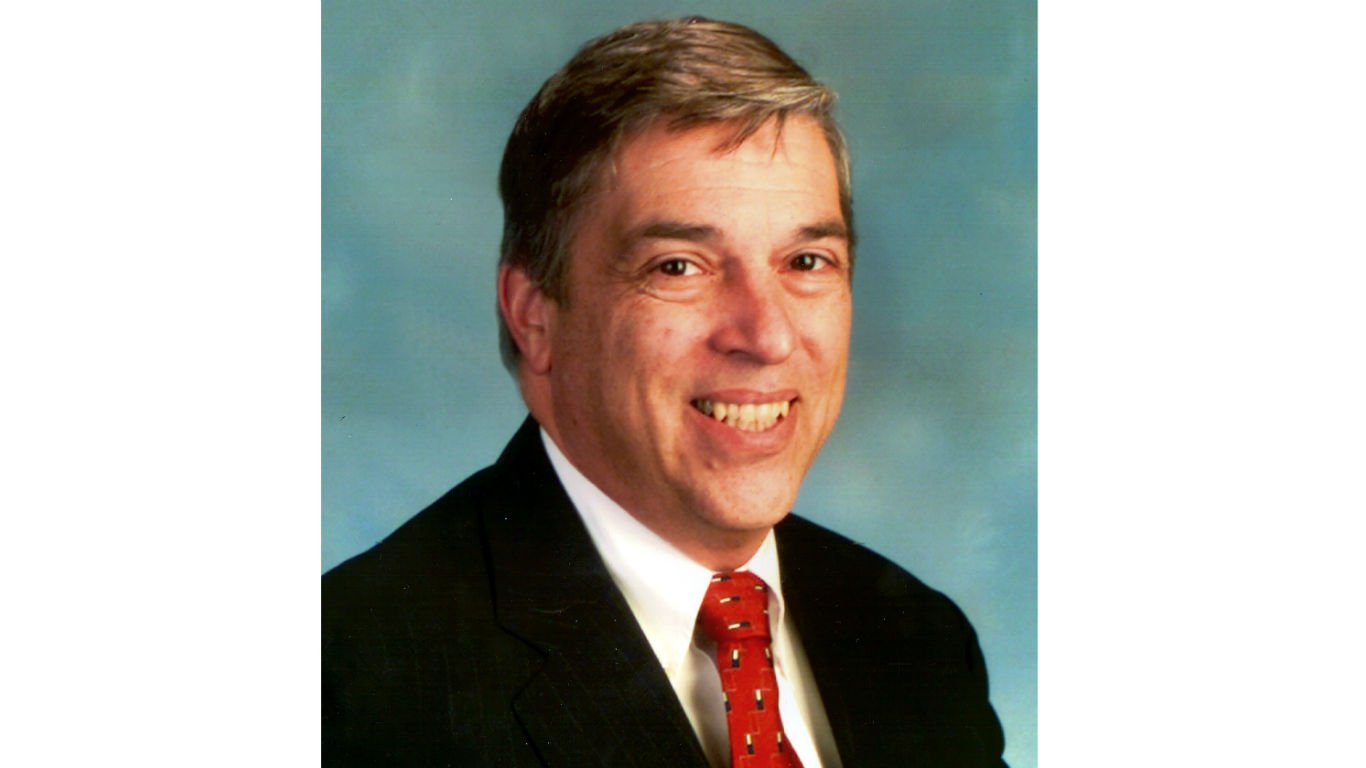
In 1976, Robert Hanssen began his career as an FBI agent, but by 1985, he was working for the former Soviet Union, slipping the Russians classified secrets in exchange for more than $1.4 million in cash, bank funds, and diamonds. The FBI knew they had a mole in their midst for many years, but Hanssen was adept at covering his tracks and wasn’t unmasked until 2001 when Russian documents pinpointed him as a double agent. After pleading guilty to 15 counts of espionage, Hanssen was sentenced to life in prison without possibility of parole.
Operation Illwind

In yet another damaging corruption case, the FBI (together with other agencies) uncovered defense procurement fraud on a massive scale. The 1988 investigation revealed that Defense Department employees had passed on inside information on procurement bids in exchange for bribes. Operation Illwind identified corruption at the highest level including a deputy assistant secretary of the Navy. It also broke new ground with the use of court-authorized electronic surveillance and discovered the largest defense procurement fraud in US history.
Pan Am 103 Bombing
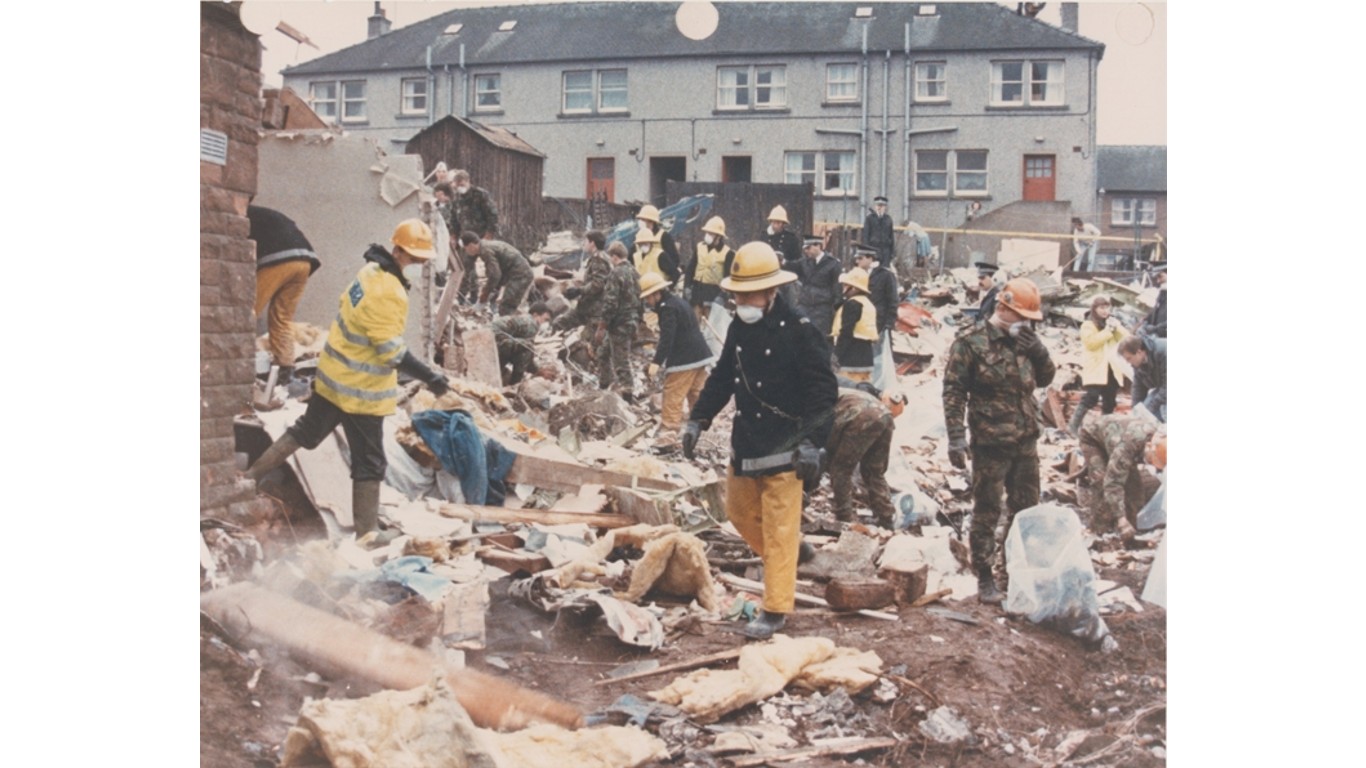
Prior to 9/11, the world endured a shocking act of terrorism when Pan Am Flight 103 was blown up over Scotland in 1988, killing all 259 passengers, 190 of them Americans, as well as 11 people on the ground. A painstaking review of the wreckage led the U.S. and the U.K. to charge Libyan nationals Abdel Basset Ali al-Megrahi and Lamen Khalifa Fhimah with planting a bomb in the aircraft. A 2000 trial in a Scottish court acquitted Fhima but the following year convicted al Megrahi, sentencing him to life in prison. The Libyan government admitted to its part in the bombing and agreed to pay nearly $3 billion to the victim’s families. Al-Megrahi was released from prison after being diagnosed with cancer in 2009 and died in Libya in 2012.
Child Images Ring
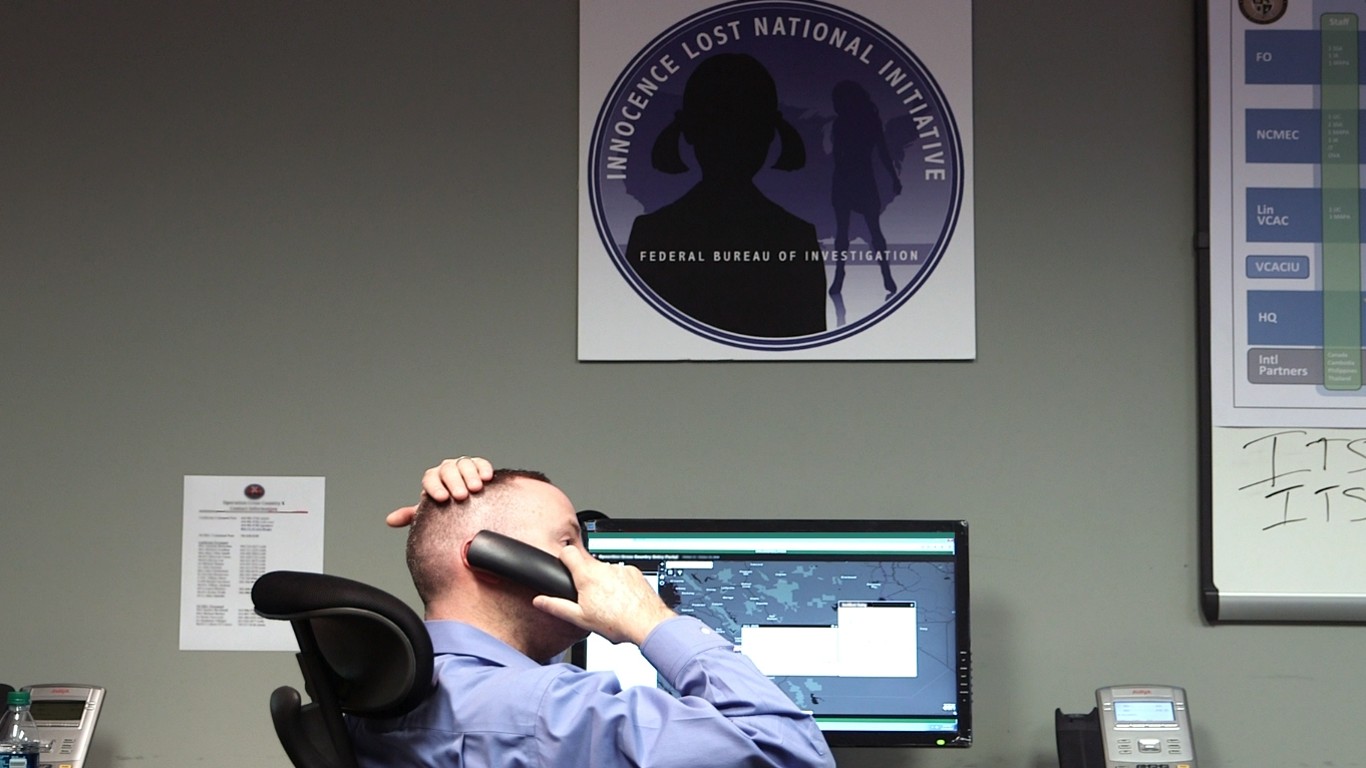
A missing child report accidentally led agents to break up a child pornography ring. When 10-year-old George Stanley “Junior” Burdynski went missing from Brentwood, Maryland in May 1993, agents went door-to-door to solicit clues. They came upon two men who had been luring children with gifts and the offer of vacations. It was discovered that the men had taken their criminal activities online, “chatting” with young children and setting up meetings and sharing child pornography images. The men were eventually convicted of abusing children, although there was no evidence that they were involved in the missing child case. In 1995, the FBI launched the Innocent Images Initiative (now renamed as part of the Violent Crimes Against Children Unit) to catch child predators. Since 2007, the FBI has won 6,800 convictions. Sadly, the missing Maryland boy was never found.
Oklahoma City Bombing

The horrific Oklahoma City bombing was the worst case of homegrown terrorism in US history. At precisely 9:02 am on April 19th 1995, a bomb exploded in a rented truck parked outside the Alfred P. Murrah Federal Building in downtown Oklahoma City. The deadly combination of chemicals (including agricultural fertilizer and diesel fuel) destroyed a third of the building, incinerated dozens of cars, and damaged at least 300 surrounding buildings. A total of 168 people were killed including 19 children and several hundred were injured.
The rear axle of the rented Ryder truck provided vital clues to lead the FBI to the perpetrator – Tim McVeigh. In a bizarre turn of events, he was already in jail having been arrested for possessing a concealed weapon. However, McVeigh had not acted alone and his accomplices were also soon identified. The motive for the attacks? Extremist ideologies and anger over the events at the Waco siege two years earlier.
Atlanta and Birmingham Bombings
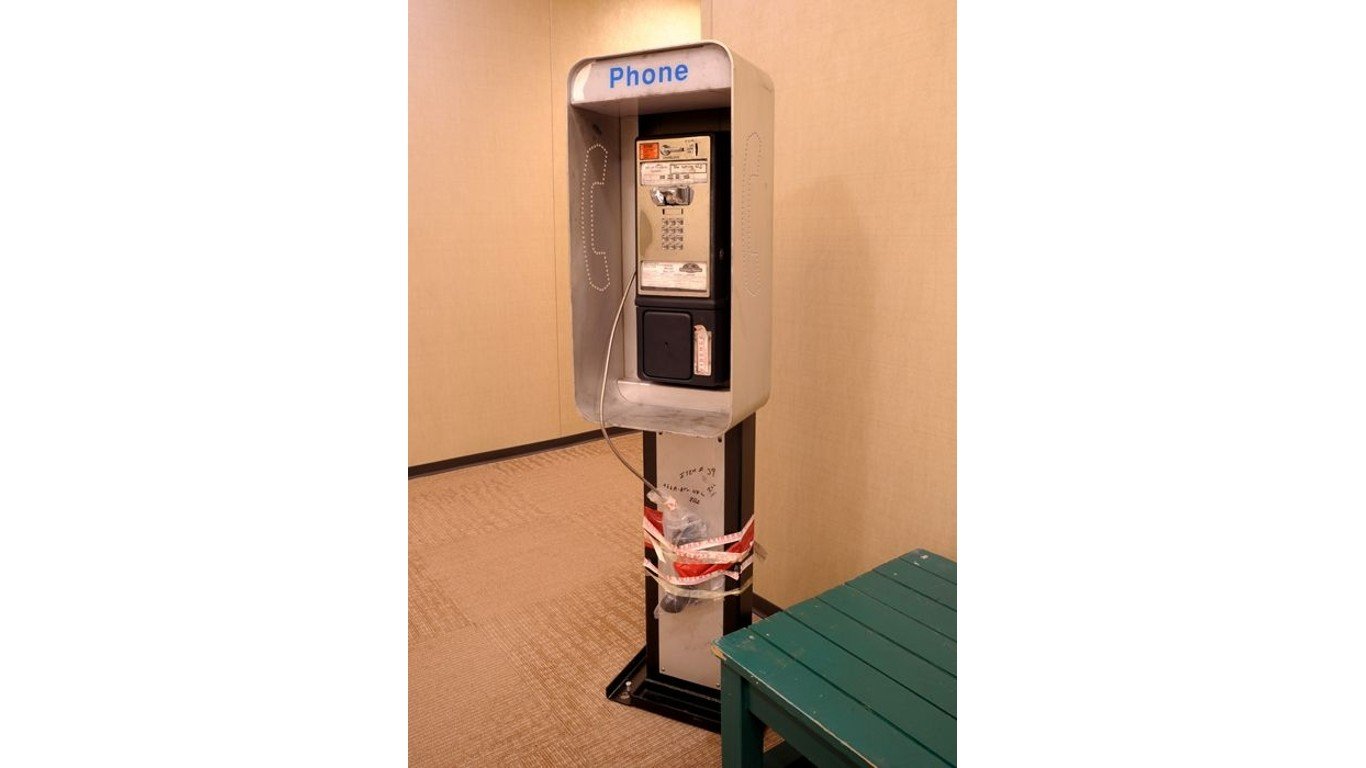
Eric Robert Randolph went on a bombing spree from 1996 to 1998, setting off explosives in Atlanta and Birmingham, Alabama, that killed two and injured hundreds. The first was a bomb detonated at the 1996 Summer Olympics in Atlanta, killing one woman, though Randolph had called police to warn them about the bomb. (Security guard Richard Jewell was unjustly accused of being the bomber, and was considered the FBI’s prime suspect for some time.) Randolph subsequently bombed a lesbian bar and an abortion clinic in the Atlanta area and an abortion clinic in Birmingham – the latter explosion claiming the life of an off-duty policeman. Put on the FBI’s most wanted list, Randolph eluded agents until he was captured in 2003. He pled guilty to Federal charges stemming from the bombings and is currently serving multiple life sentences with no possibility for parole.
Bombing of American Embassies in East Africa

In response to the coordinated attacks on four African US embassies on 7th August 1998, over 900 FBI agents traveled overseas to help with the investigations. This was the largest deployment in the bureau’s history. The bombings in Nairobi, Kenya, Tanzania, and Dar es Salaam killed a total of 224 people and injured more than 4,500. The attacks were the work of the terrorist organization al Qaeda and several arrests followed in the years after. More than 20 people have been charged in connection with the bombings, some are now dead whilst others are serving life sentences in US prisons.
The Melissa Computer Virus

Anyone using a computer today is hyper-aware of computer viruses. In 1999, a programmer named David Lee Smith infiltrated an AOL account and used it to spread a virus under the guise of giving people access to adult content. By late March, the virus, named after a stripper Smith knew, had taken over the Internet. Although Smith had no intention of stealing money or information, his virus clogged up the email servers at 300 corporations and government agencies. Luckily, service was restored in a matter of days. With a tip from an AOL representative, the FBI and New Jersey law enforcement traced the virus to Smith, who was sentenced to 20 months in federal prison and fined $5,000. After the crime, the FBI established the National Cyber Division to stop online crimes.
Anthrax Attacks
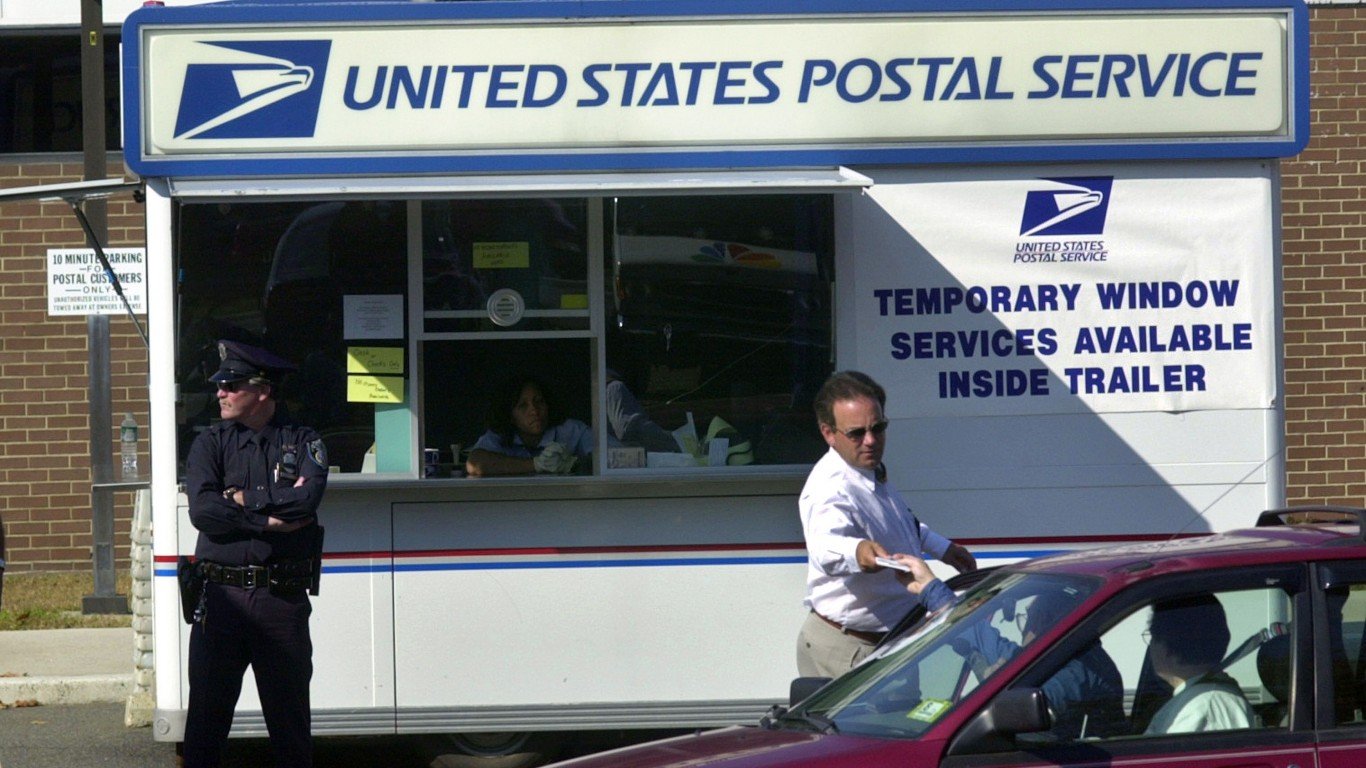
It took a collaboration of the FBI, the U.S. Postal Service, the District of Columbia and the Justice Department’s Counterterrorism Section to solve the mystery of suspicious packages containing anthrax. The deadly bacteria killed five people and left another 17 sick. The culprit was eventually identified as Dr. Bruce Ivins. However, he took his own life before he could be charged. This was a scientifically groundbreaking case for the FBI who had to develop new scientific techniques to combat the bioterror attacks.
The Collapse of Enron
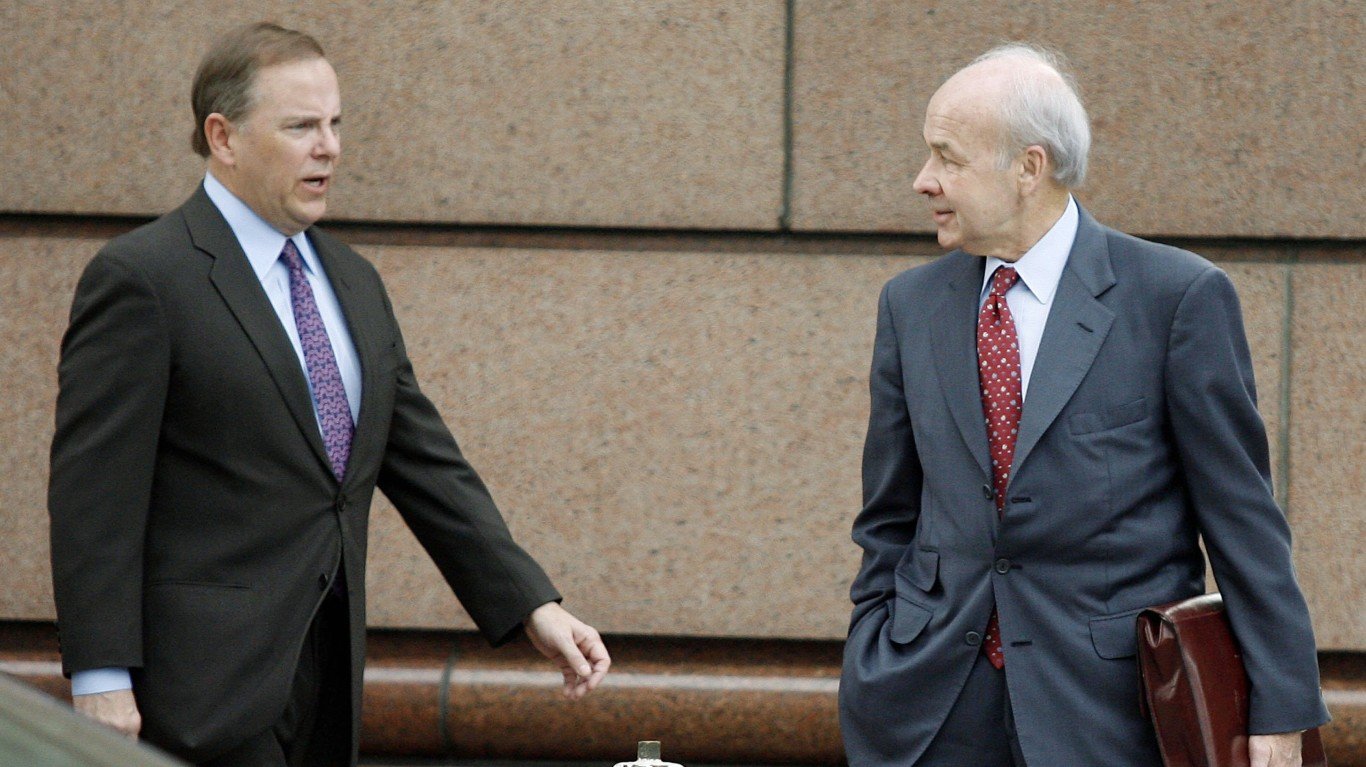
In 2001, the FBI broke open one of the most complex and far-reaching white collar crimes in the country’s history. After the Texas-based energy and commodities company Enron declared bankruptcy in December 2001, investors and employees were left penniless. And what started as a two-agent investigation expanded to a 45-member Enron Task Force, which combined investigators and analysts from the FBI, the Internal Revenue Service Criminal Investigation Division, and the Securities and Exchange Commission, and prosecutors from the Department of Justice. After combing through 3,000 boxes of evidence and interviewing more than 1,800 people, agents uncovered shady accounting practices that enriched Enron executives. In the end, 22 people, including the chief executive of the company, were convicted of fraud.
Beltway Snipers
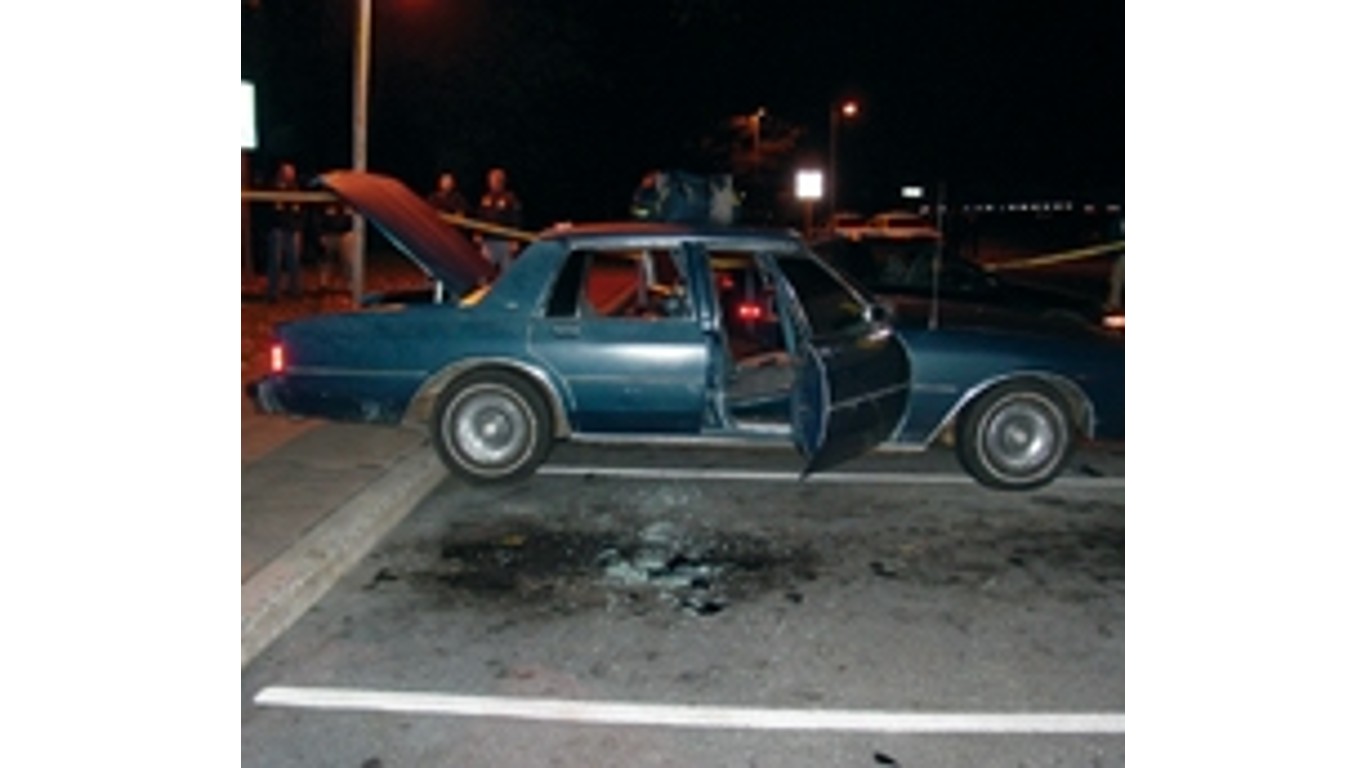
In 2002, a pair of snipers terrorized the citizens of the Washington, D.C., area. It began with the murder of a 55-year-old man in a parking lot in Wheaton, Maryland. The next day, four more people were killed in a similar fashion while going about their everyday lives. All told, 10 people were gunned down and three critically injured, including FBI agent Linda Franklin. A cross-country investigation led agents to two men – John Allen Muhammad and Lee Boyd Malvo. Both were identified from their arrest records in Alabama and Washington state. Agents were able to identify the car registered to Muhammad, a blue Chevy Caprice with New Jersey plates. On October 24, FBI agents and other law enforcement officers arrested Muhammad and Malvo along with and seized the rifle they used in the killings. Malvo later admitted that he and Muhammad had earlier shot people in California, Texas, Florida, and Louisiana. Both were tried several times in different jurisdictions. Malvo is serving a life sentence without parole, and Muhammad was executed on Nov. 10, 2009.
Hurricane Katrina Fraud

Hurricane Katrina was a Category 5 Atlantic hurricane that hit New Orleans and the surrounding area in late August 2005. However, the damage to the FBI’s New Orleans office did not stop the Bureau from investigating fraud related to Hurricane Katrina. Soon after the flood waters receded, the agency established the Hurricane Katrina Task Force to uncover fraudulent claims against the government. This including contract fraud, investment fraud, and charity fraud, as well as various embezzlement schemes set up by people trying to take advantage of a terrible situation. In 2006, The Government Accountability Office released a report estimating that potentially fraudulent individual assistance payments related to hurricanes Katrina and Rita (which hit the Gulf Coast a month after Katrina) ranged from $600 million to $1.4 billion.
History’s Biggest Ponzi Scheme
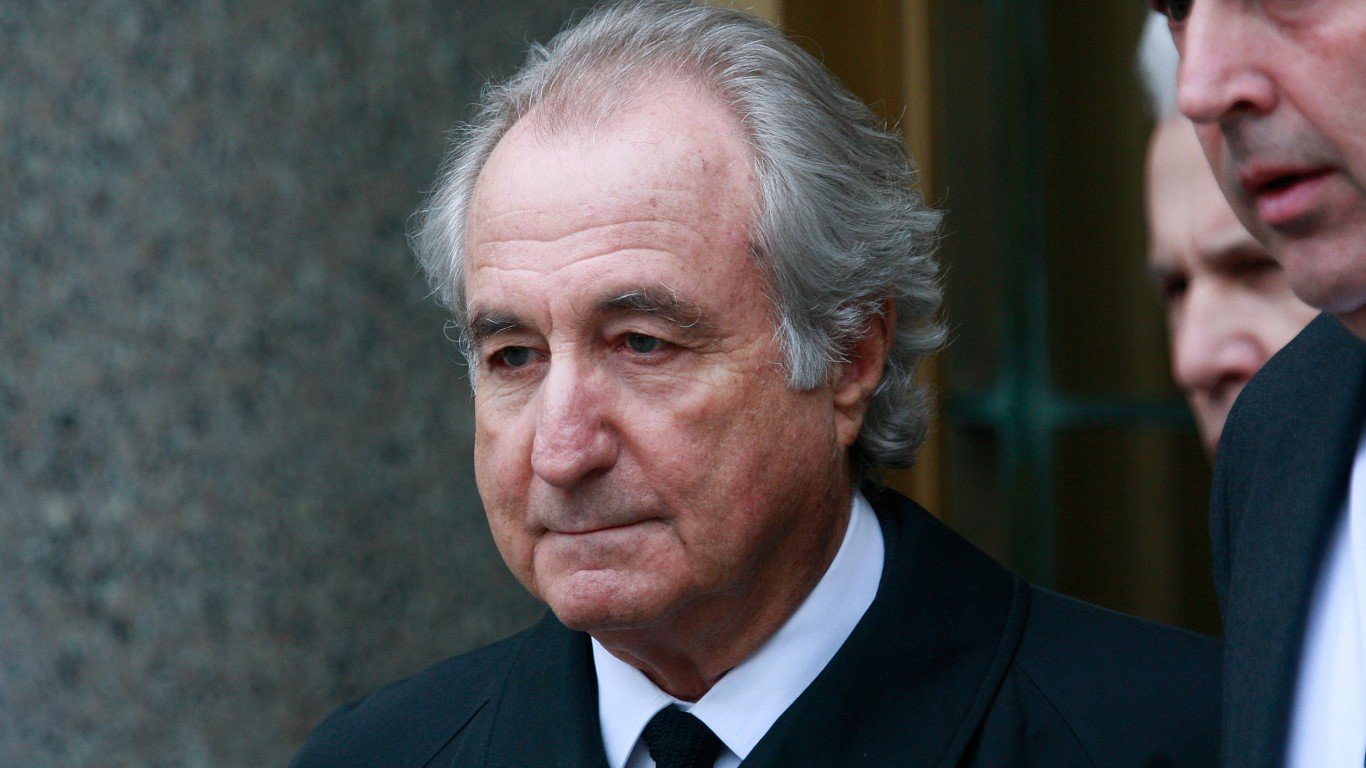
Outwardly, Bernie Madoff was a successful investment manager, while in reality, he was running the biggest Ponzi scheme in U.S. history. Promising high returns to investors, he instead took money from new clients to pay back earlier investors or for his personal use. When questions about Madoff’s business practices arose in business publications, his books were audited by the SEC. With his firm running out of money, Madoff was arrested on Dec. 11, 2008, after admitting to his sons that he was running a Ponzi scheme. Madoff was sentenced to 150 years in prison, but died in 2021 while in a correctional facility in North Carolina at age 82.
